Looking for zero drop running shoes that actually work for women’s feet?
Here’s what I’ve learned after testing dozens of zero drop shoes: most reviews completely miss the mark when it comes to specific fit needs. Sure, they’ll tell you about toe box width, but what about heel security? Volume distribution? The fact that your feet might be completely different from whoever wrote that glowing review?
When I’m asked about zero drop shoes, the same concerns come up repeatedly. The heel slips around like a loose sock (hello Lone Peaks). The midfoot feels sloppy despite the “perfect” toe box. Or my personal favorite – shoes that are wide but ridiculously shallow, leaving your toes feeling cramped from above.
In this guide, I’m sharing my top picks for zero drop shoes that genuinely work – not just scaled-down versions of unisex designs. Through years of helping people find the perfect shoe in-store and online, I’ve gathered real-world feedback from runners who actually wear these shoes. Whether you’re making the leap from cushioned trainers or you’ve been running barefoot for years, these recommendations are based on actual testing and honest feedback.
Affiliate Disclosure: By clicking through the links on this page and purchasing the products, you’ll be helping me out. This is done because I receive a kickback from the sellers at no extra cost to you! Thank you so much for supporting us!
Most traditional running shoes follow outdated design assumptions about foot anatomy and running patterns. This creates real problems – narrower heels that slip, volume distribution that doesn’t match actual foot shapes, and heel-to-toe drops that often encourage overstriding.
Zero drop shoes level the playing field, literally. When your heel and toe are at the same height, your body naturally finds a more efficient stride. Instead of reaching forward and heel-striking hard (which many people do in traditional shoes), you’ll likely land closer to your center of gravity with less impact.
There’s also the hormonal factor that most reviews ignore. Research shows that ligament stability changes throughout menstrual cycles, during pregnancy, and with hormonal fluctuations. A lower-profile shoe with better ground connection could provide more stable proprioceptive feedback when your body’s natural stability is shifting.
That said, I’m not here to tell you zero drop will solve all your running problems. The transition takes patience, and finding the right shoe for YOUR feet is crucial. Not every zero drop shoe will work for every person – which is exactly why I’ve put together this guide.
Heel Shape and Security
Most zero drop shoe reviews completely ignore heel fit while obsessing over toe box width. Here’s what drives me crazy about this approach – many people have narrower heels relative to their forefoot width, which creates a real problem in many zero drop shoes, especially from brands that use unisex lasts.
I’ve tested shoes that felt perfect in the toe box but turned into blister machines because the heel was swimming around (I’m looking at you Lone Peaks….). The heel cup needs to actually cup your heel – not just exist in name only. Look, and feel for heel designs that fit your foot and offer some adjustability in the collar area.
Volume Distribution Differences
Volume distribution varies dramatically between individual feet, typically with less volume in the midfoot and more over the forefoot. This is why a shoe can feel perfect when you’re standing in the store but feel cramped or pressure-y during a run when your feet swell and flex.
Individual instep height creates one of the biggest fit challenges in zero drop shoes. I’ve worked with runners who have pancake-flat arches and others whose insteps are so high they struggle with most shoes. The good news? There are zero drop options that handle this variation much better than rigid traditional trainers that force your foot into a predetermined shape.
Best for Road Running
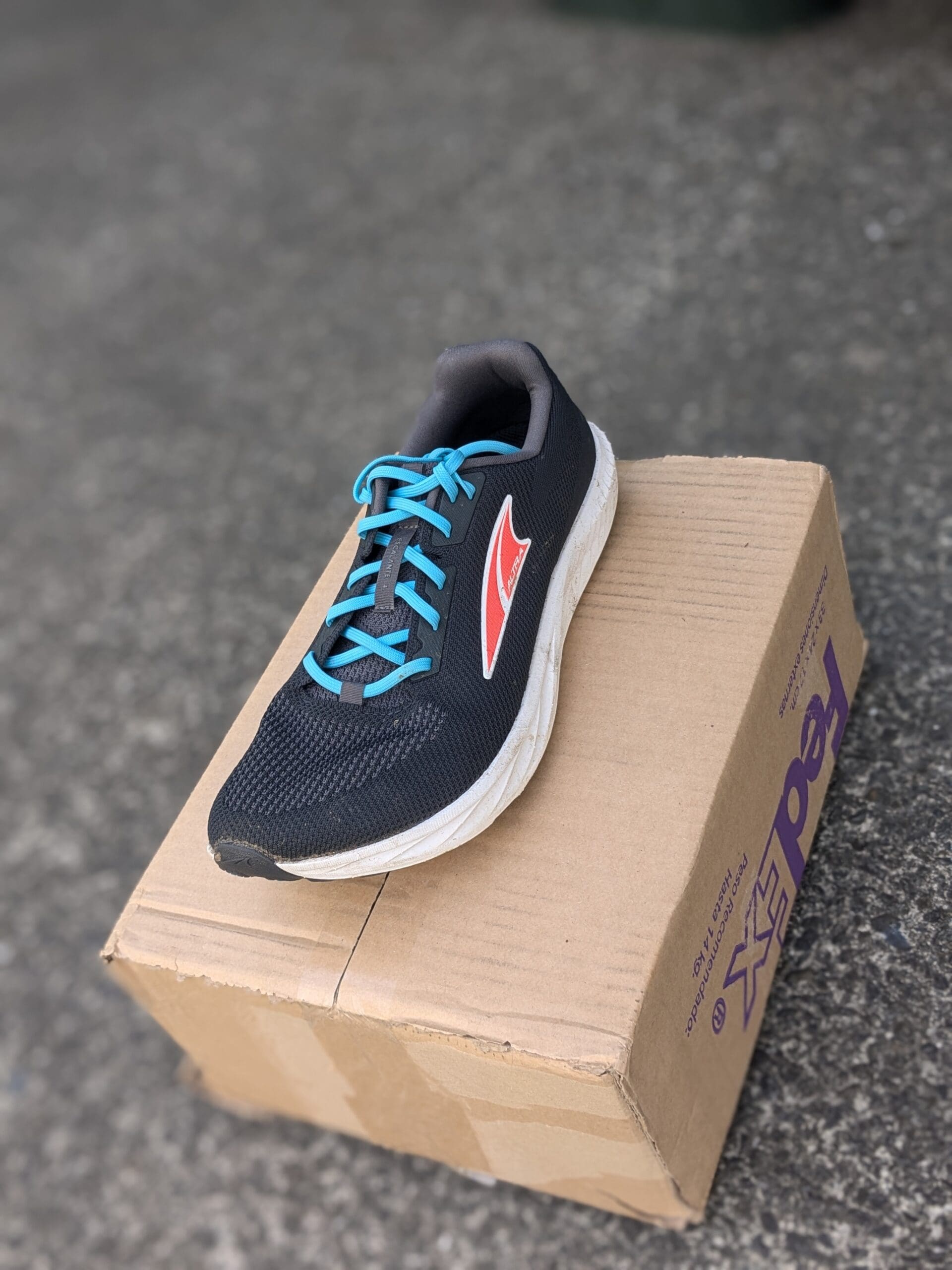
Altra Escalante 4
If I had to pick one shoe to recommend to zero drop newcomers, this would be it. The Altra Escalante 4 strikes that sweet spot between the roomy toe box that makes Altra famous and a heel that won’t completely disappear on you.
With 24mm of cushioning, it doesn’t feel like you’re suddenly running barefoot on concrete. The zero drop geometry is there, but it’s not aggressive about it. Your body gets time to adapt while still learning proper form patterns.
Here’s what works: The toe box is spacious without being ridiculous, and the heel is flexible allowing for many heel shapes. The depth is forgiving, which means both low and high-volume feet can find comfort and this can be further enhanced by switching out the insole for something thinner or thicker.
Sizing note: Stick with your normal size unless you have high volume feet – then consider going up a half-size.
Best for: Zero drop beginners, anyone transitioning from chunky shoes, daily training miles
Affiliate Disclosure: By clicking through the links on this page and purchasing the products, you’ll be helping me out. This is done because I receive a kickback from the sellers at no extra cost to you! Thank you so much for supporting us!
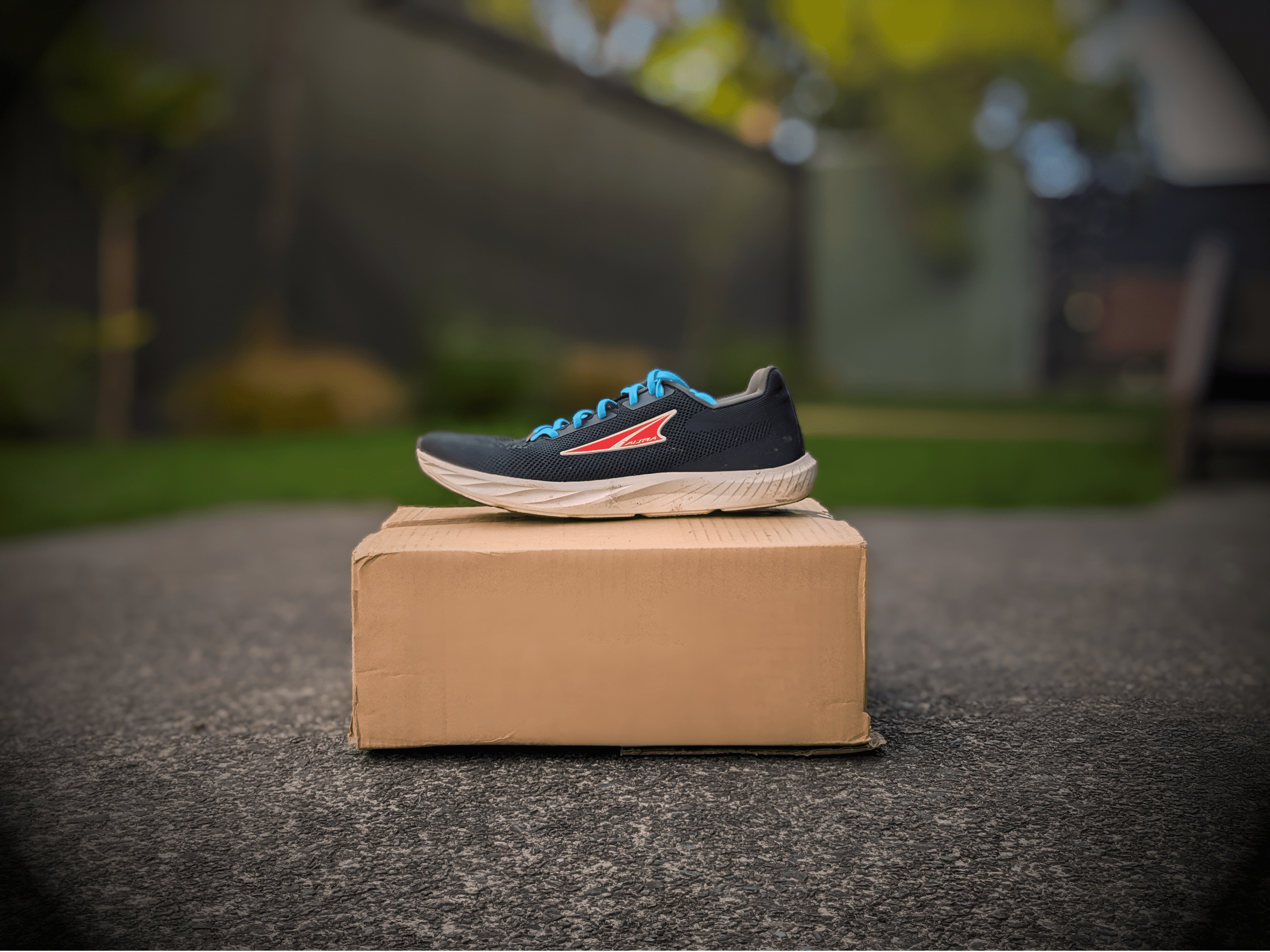
Altra Escalante 4
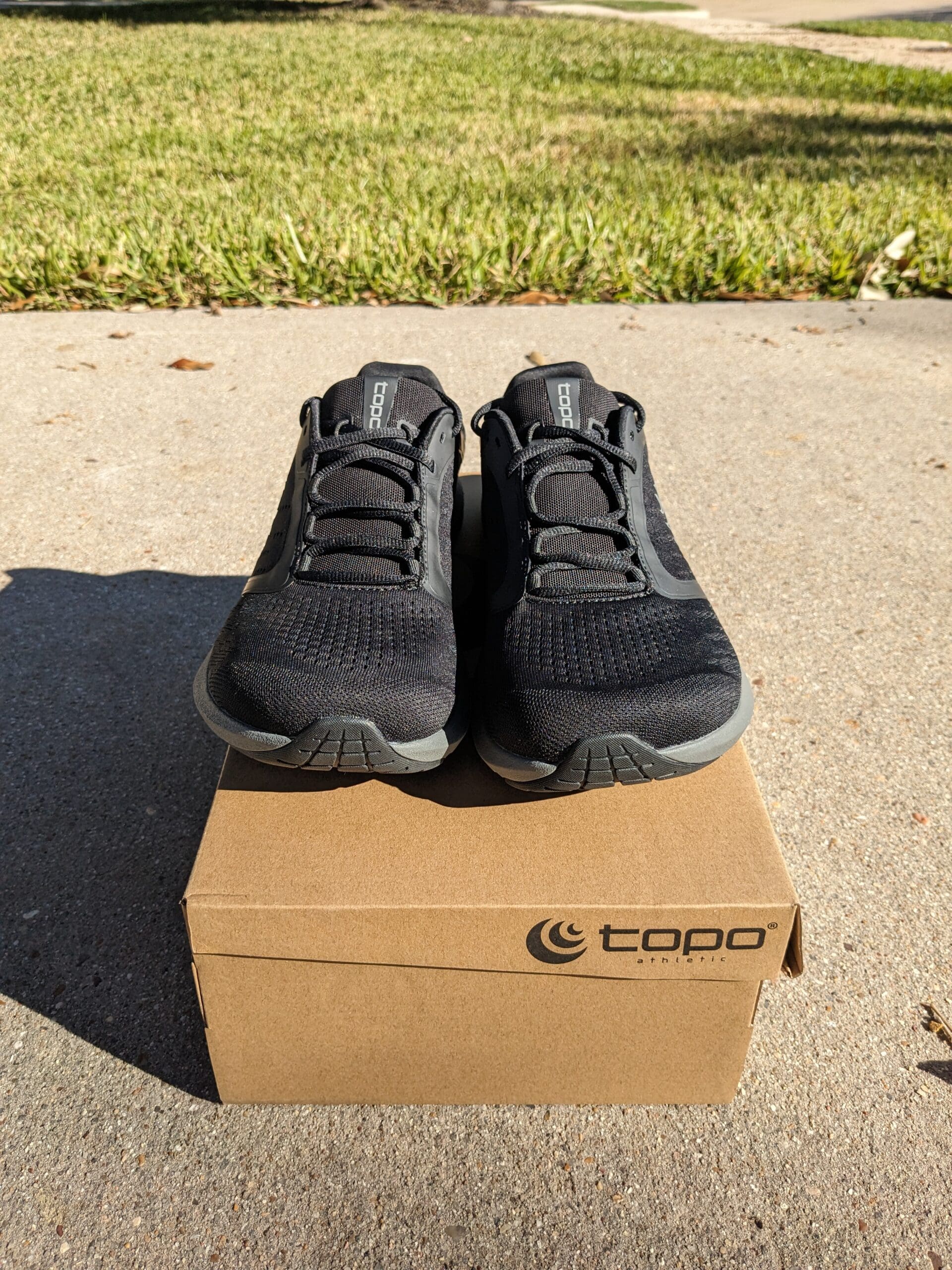
Topo Athletics ST-5
The Topo Athletics ST-5 is for runners who want performance without the marshmallow feeling. At 14mm stack height, you’re getting into more serious minimal territory, but the payoff is a responsive, connected ride.
The heel design is actually brilliant for some, but not for others. If you’re coming from traditional running shoes, that unconventional collar might feel strange at first. But here’s what it actually does – it locks your heel down without the excessive padding most shoes use. For those who’ve struggled with heel slippage in minimal shoes, this could be a game-changer. The flip side? Some find it too restrictive, especially if you prefer that barely-there feel. Combined with an insole with arch support, it’s a love-it-or-hate-it situation that really depends on your foot shape and running style.
Width-wise, it’s similar to most Altra options – wide enough for natural toe splay but not so generous that you’re sliding around.
Sizing: True to size works for most people. If you have genuinely wide feet, consider sizing up, but the fit is much more dialed-in than most zero drop options.
Best for: Performance-focused runners, average width feet, tempo runs and shorter distances
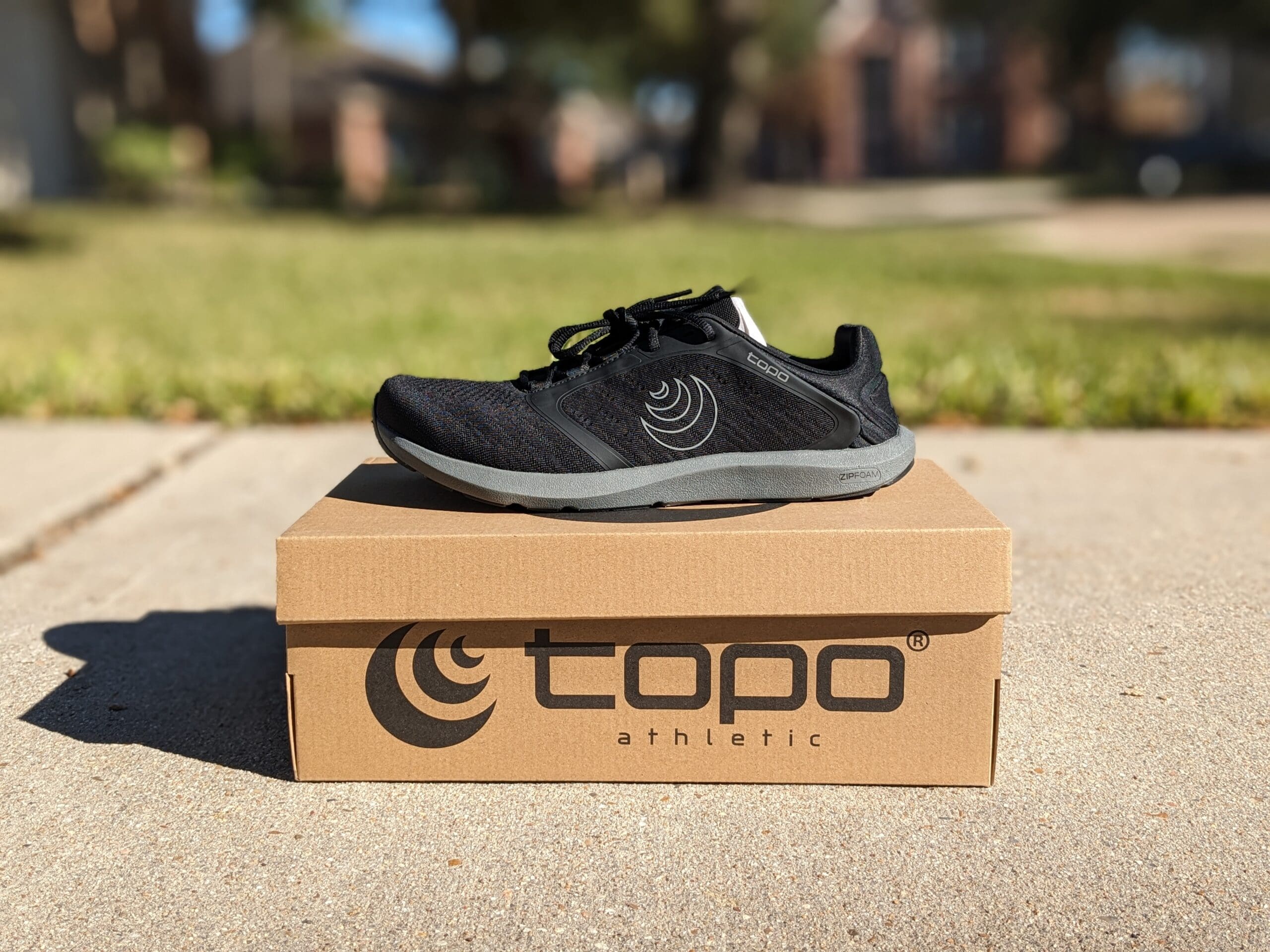
Topo Athletics ST-5
Which Altra Shoe is for you?
Take a quick 4-question quiz to identify the perfect Altra running shoe for your feet! You'll get both road and trail options based on your answers!
Best for Trail Running
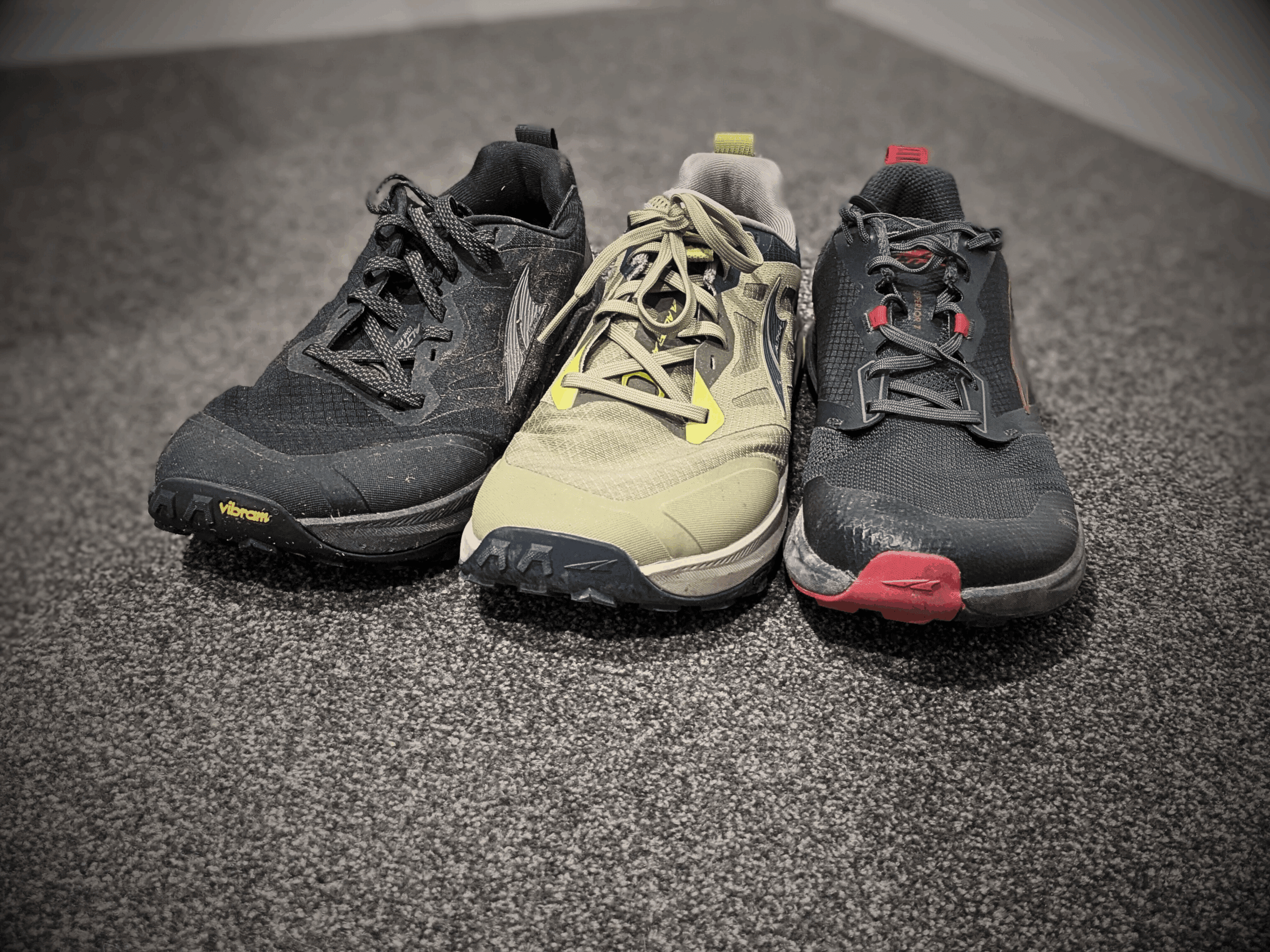
Altra Superior 7
The Altra Superior 7 is Altra’s trail shoe for runners who actually want to feel the trail. At 21mm stack height, you get protection without that disconnected feeling that plagues many trail shoes.
Finally – an Altra that doesn’t fit like a boat. The fit is noticeably snugger than other Altra models, which addresses the biggest complaint I hear about the brand. You still get that anatomical toe box, but the midfoot and heel are more “fitted”.
The depth runs shallow, which creates pressure issues for high-volume feet. If you have high-volume feet, you might feel pressure on top. Removing the insole or swapping in a thinner one usually solves this, but if you’re craving more depth, then try the Altra Lone Peak 9.
Sizing reality: Most people need to go up a half-size because the fit runs narrow throughout, but this actually results in better heel security than going true-to-size in roomier Altra models.
Best for: Experienced zero drop runners, technical trails, anyone tired of sloppy-fitting shoes
Altra Superior 7
Type: Trail
Width: Wide
Stack height: 21mm
Weight: 7.6oz / 215g
Altra’s most minimal trail shoe with a snugger fit than other models. Read the full Review
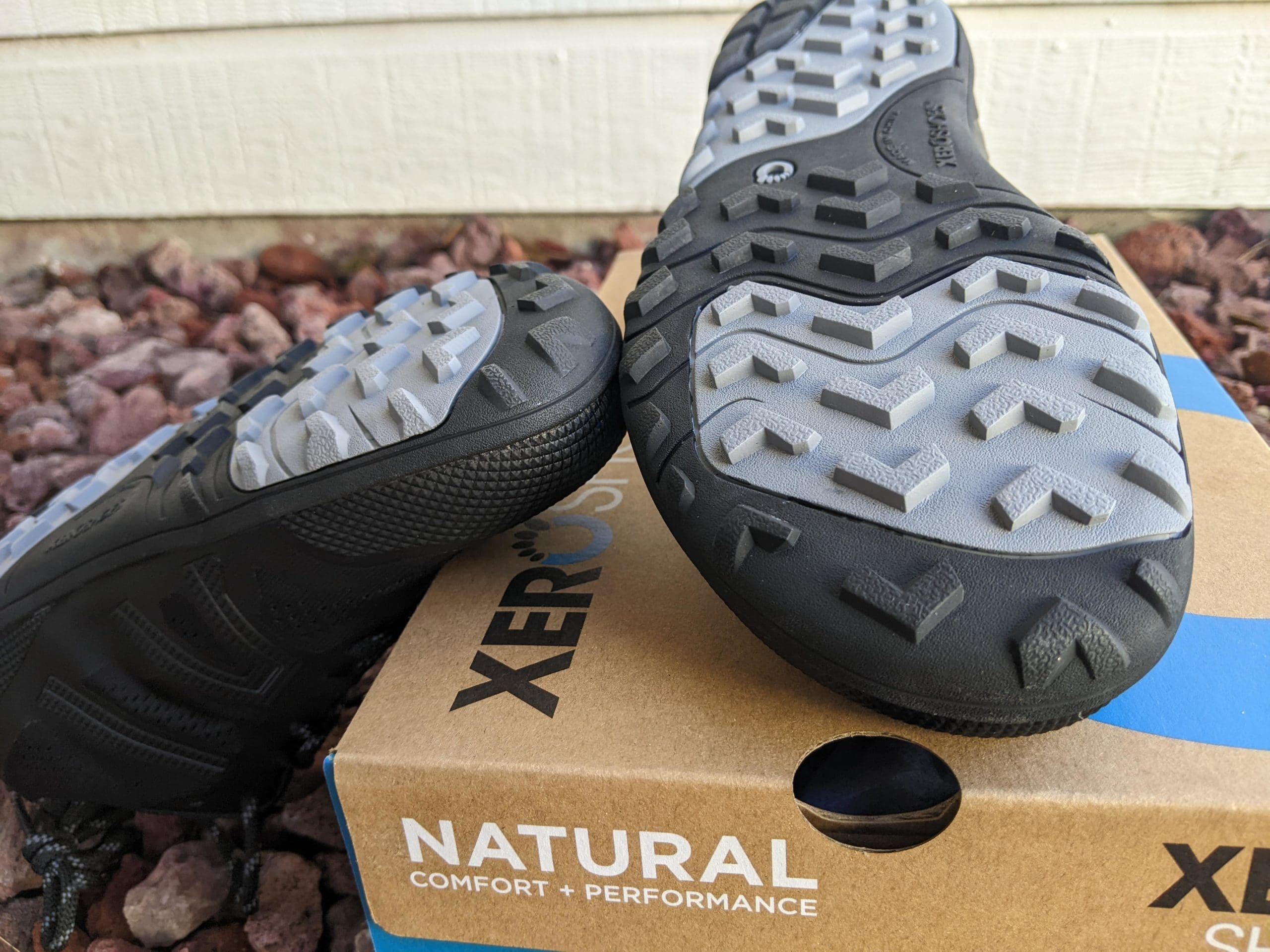
Xero Shoes Mesa Trail II
The Xero Shoes Mesa Trail II is minimalist trail running taken seriously. That 5.5mm sole gives you incredible ground feel while the aggressive lugs actually grip technical terrain which I find works best in the dry rather than the wet.
The flexible upper accommodates different foot shapes better than most trail shoes. The fit surprises me every time I recommend this shoe. Because of its flexible construction, it molds to your foot rather than forcing your foot into a predetermined shape. The heel cup provides excellent security without feeling restrictive.
Maximum flexibility transforms how your foot interacts with technical terrain. Your foot can move naturally over rocks and roots, which makes it excellent for building foot strength and improving your trail technique.
Sizing heads-up: You may need a 1/2 size up from your regular shoe size. The toe box isn’t quite as wide as Altras, so some of you would like that extra room.
Best for: Experienced barefoot runners, technical trails, runners who want maximum terrain feedback
Xero Shoes Mesa Trail II
Type: Trail
Width: Mid-wide
Stack height: 9mm
Weight: 7.4oz / 210g
True minimalist trail shoe with maximum ground feel and flexible construction. Read the full Review
Best for Gym and Cross-Training
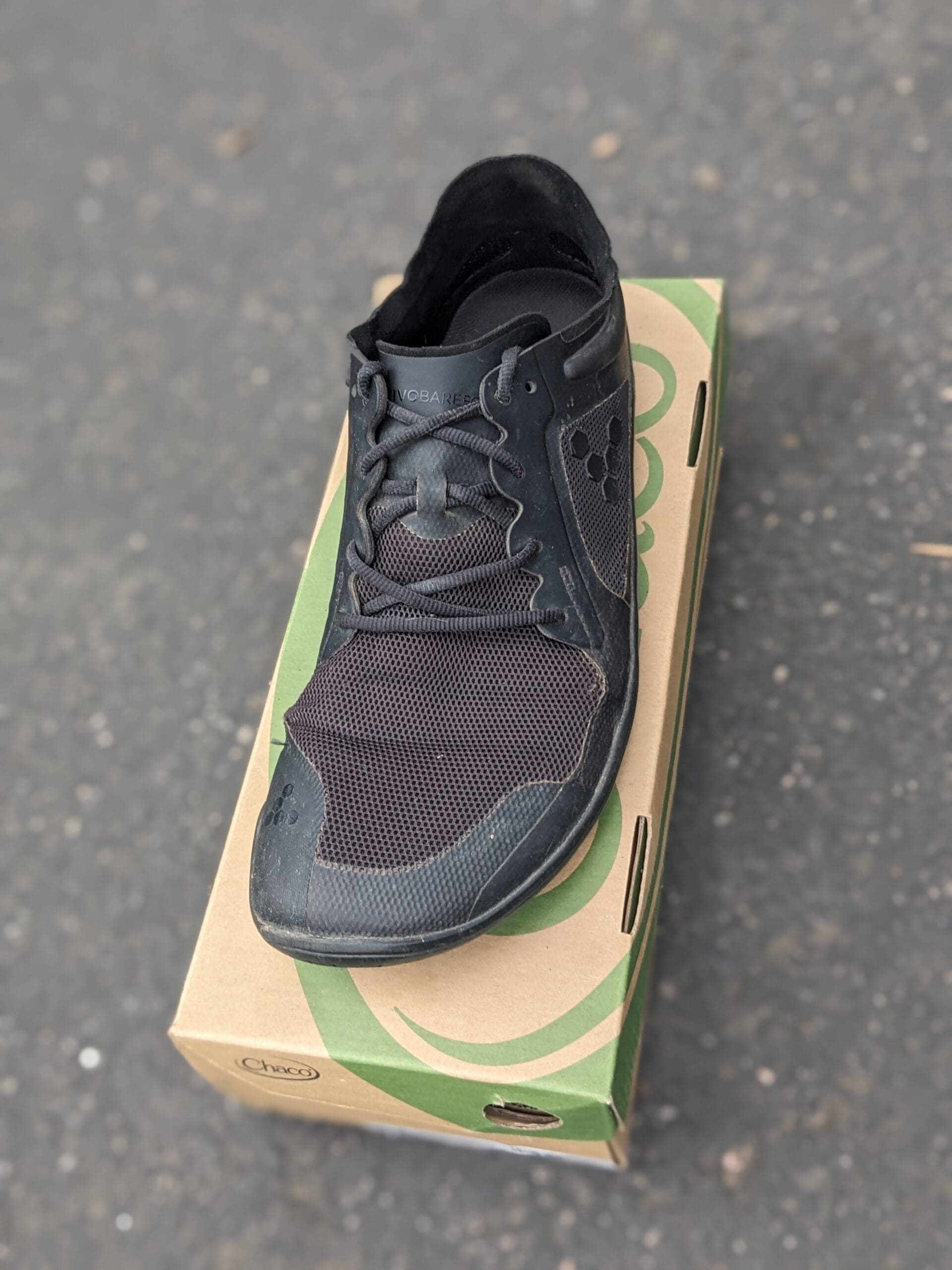
Vivobarefoot Primus Lite III
The Vivobarefoot Primus Lite III is the ultimate gym shoe for anyone serious about foot health. With minimal stack height and maximum flexibility, it’s designed to let your feet work naturally during weightlifting, HIIT, and functional training.
Vivobarefoot’s lower overall volume suits people with average-depth feet perfectly. While these shoes can run wide in the toe box, the overall volume is lower than brands like Xero or Altra, making them more suitable for people who don’t need excessive depth.
The heel security is outstanding thanks to the low-profile design and snug collar. Many runners find this shoe locks onto their foot better than bulkier zero drop options.
Sizing advice: True to size or slightly large. The thin sole means you want adequate toe room, but not excess volume elsewhere.
Best for: Gym workouts, strength training, narrow to average width feet
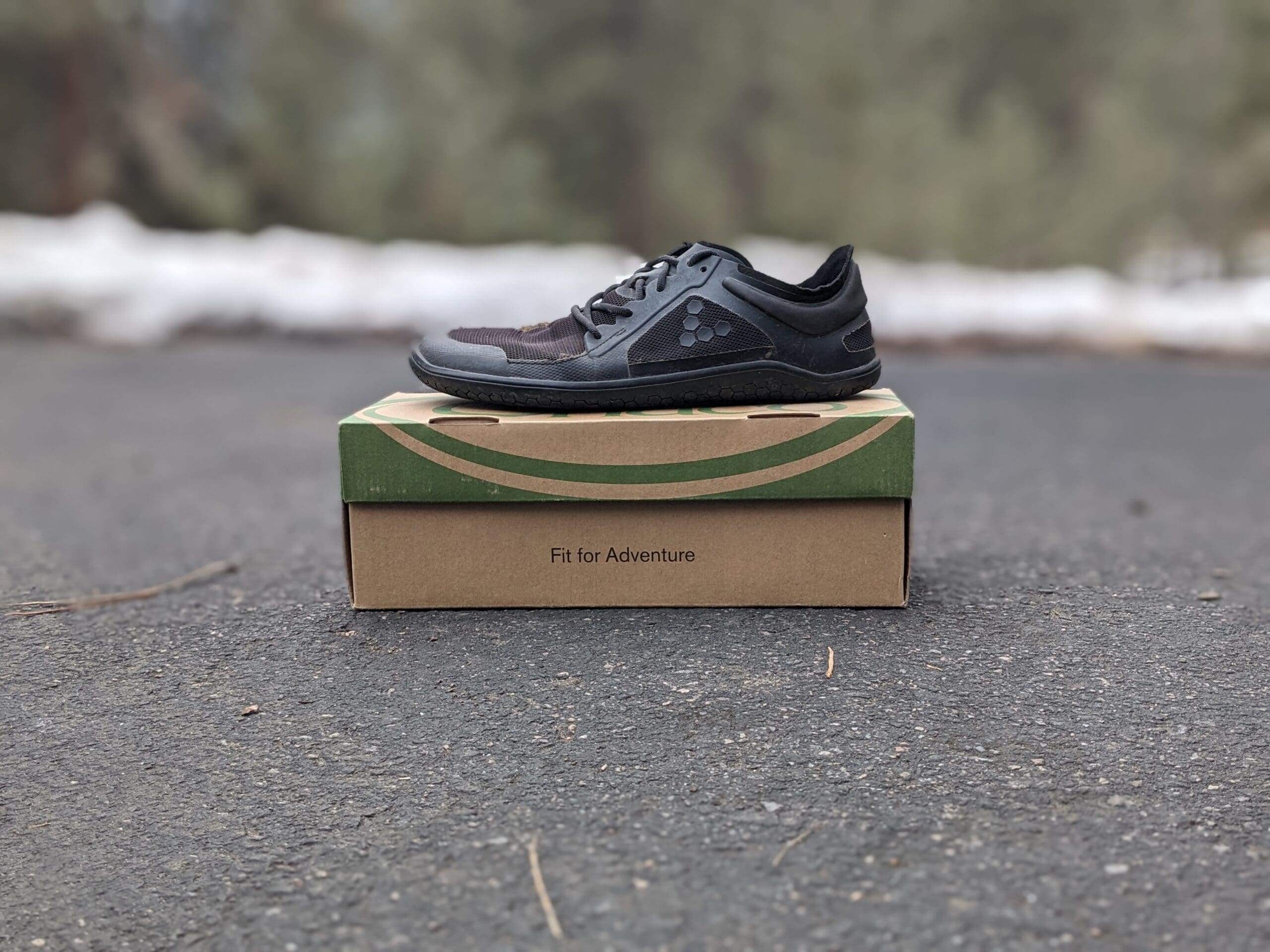
Vivobarefoot Primus Lite III

Freet Vibe 2
The Freet Vibe 2 offers a budget-friendly entry into zero drop training shoes. With minimal cushioning but good flexibility, it’s perfect for anyone wanting to try the zero drop concept without a huge investment.
The generous fit throughout works for wide feet but can be problematic for narrow feet. Those with wider feet or higher volume will appreciate the room, while those with narrow feet might find it too spacious.
Heel security suffers due to the overall generous sizing approach. This is where careful sizing becomes crucial to avoid slippage issues.
Sizing advice: Most people should size down a half-size from their normal athletic shoe size. The generous fit means you need to dial in the length for proper heel security.
Best for: Budget-conscious buyers, casual gym use, those with wide feet
Freet Vibe 2
Type: Cross-training
Width: Wide
Stack height: 10mm
Weight: 6.7oz / 190g
Budget-friendly zero drop training shoe with generous fit for wide feet. Read the full Review
General Sizing Principles
Every zero drop brand sizes differently, so use your athletic shoe size only as a starting point. Be prepared to adjust up or down depending on the specific brand and your foot’s characteristics.
Consider your foot’s specific characteristics:
- Narrow heels: May need to size down 1/2 size in generous-fitting brands
- Wide toe box needs: Stick to true size or size up slightly
- High instep: Look for flexible uppers and consider thin insoles
- Low volume feet: Avoid overly generous brands or size down if you don’t compromise length.
Brand-Specific Sizing Notes
Altra: Very much a model by model basis. Lone Peaks run big, Superiors run shallow, Escalantes are in the middle, and Timps run snug. Sorry, you’ll just have to trawl through my reviews! 🙂
Vivobarefoot: Generally true to size but with lower overall volume than other minimalist brands. Works well for people with average width feet who find other brands too roomy.
Xero Shoes: Almost always requires sizing up due to narrow toe room – you need legitimate space when there’s barely any foam underfoot.
Topo Athletics: The most predictable sizing in the zero drop world. Usually runs true to size, making it easier to get the fit right without multiple returns.
Understanding Your Starting Point
Your current activity level and foot strength determine your transition timeline. If you’ve always worn high drop shoes, you likely have tighter calves and weaker foot muscles than those who regularly go barefoot or wear flatter shoes.
Phase 1: Daily Wear Adaptation (Weeks 1-3)
Start with the most cushioned zero drop option you can find. I typically recommend the Altra Escalante 4 or Topo ST-5 for this phase – they’re forgiving while your body adapts.
Daily activities should come before any running attempts. Start with grocery shopping, walking the dog, and casual errands. Begin with 15-30 minutes and gradually increase as your calves and feet adapt.
Understanding your body’s adaptation signals prevents injury during transition. Mild calf soreness is normal and expected. Sharp pain in your Achilles or arches is your body saying “slow down” – listen to it.
Phase 2: Introduction to Running (Weeks 4-6)
Short runs of 1-2 miles maximum should be your starting point. Complete the rest of your weekly mileage in your regular shoes while your body adapts.
Form adaptation matters more than pace during early transition runs. The zero drop position will encourage a more natural stride, but don’t force it. Let the change happen gradually.
Dedicated strength work accelerates successful transition. Calf raises, towel scrunches, and barefoot walking on varied surfaces help build the foot strength you’ll need.
Phase 3: Progressive Volume Building (Weeks 7-12)
Conservative mileage increases of 10-15% per week prevent overuse injuries. This is more conservative than typical training progressions, but necessary for proper tissue adaptation.
Traditional shoes should handle longer runs until full adaptation occurs. Don’t rush this process – your tissues need time to strengthen properly.
Hormonal fluctuations require extra attention during transition. Ligament laxity can change throughout menstrual cycles, potentially affecting injury risk during this adaptation period.
Phase 4: Full Transition Considerations
Smart runners maintain some traditional shoes even after full transition. This can be particularly helpful during times of hormonal change when ligament stability fluctuates.
Different zero drop shoes serve different purposes in a complete rotation. Once you’ve established a base, experiment with trail shoes, gym shoes, and daily wear options.
“These Shoes Are Way Too Wide”
This complaint comes up constantly with zero drop newcomers. The answer isn’t to give up on zero drop – it’s to find brands that understand the difference between “wide where you need it” and “swimming in excess volume.”
What actually works:
- Topo Athletics for more reasonable widths that still allow toe splay
- Vivobarefoot for lower overall volume while maintaining function
- Sizing down in generous brands like Altra (but test this carefully)
“My Calves Are Killing Me”
Normal calf soreness differs from chronic tightness that signals rushed transition. Many people come from higher-drop shoes (think about all those “performance” trainers with 12mm+ drops), which means your calves have significant adapting to do.
What actually works:
- Slow down your transition timeline (seriously, there’s no prize for rushing)
- Daily calf stretching and foam rolling become non-negotiable
- Eccentric calf raises – these can help build strength in the lengthened position
- Professional massage can be a game-changer during the adaptation phase
“They Don’t Make My Size”
Limited small sizing options frustrate many potential zero drop runners. Many brands start at size 6 or 7, leaving smaller-footed people with fewer options. The good news is there are workarounds if you’re willing to get creative.
What actually works:
- Youth sizes in brands that make sense (usually 1.5 sizes larger than adult sizing)
- Vivobarefoot consistently offers smaller sizes
- High-quality aftermarket insoles to dial in fit in slightly larger shoes
“They Don’t Look Professional Enough”
Professional appearance has been a traditional weakness in zero drop footwear. The market is evolving, but options remain limited compared to traditional dress shoes.
Professional-appropriate options:
- Vivobarefoot’s dress shoe lines
- Lems for casual professional settings
- Freet’s more subtle designs
- Keeping traditional shoes for specific professional needs
Proper zero drop transition creates lasting improvements in foot strength and running efficiency. I’ve worked with runners who report dramatic improvements in foot strength, running efficiency, and overall comfort once they’ve made the switch properly. Like any significant change in running, success comes from consistency and patience – not from trying to rush the process.
Whether you go with a cushioned transition shoe like the Escalante or dive into minimal options like the Primus Lite III, success comes down to two things: finding shoes that actually fit YOUR feet and giving your body adequate time to adapt. Get those two things right, and your feet – and your running – will thank you for it.
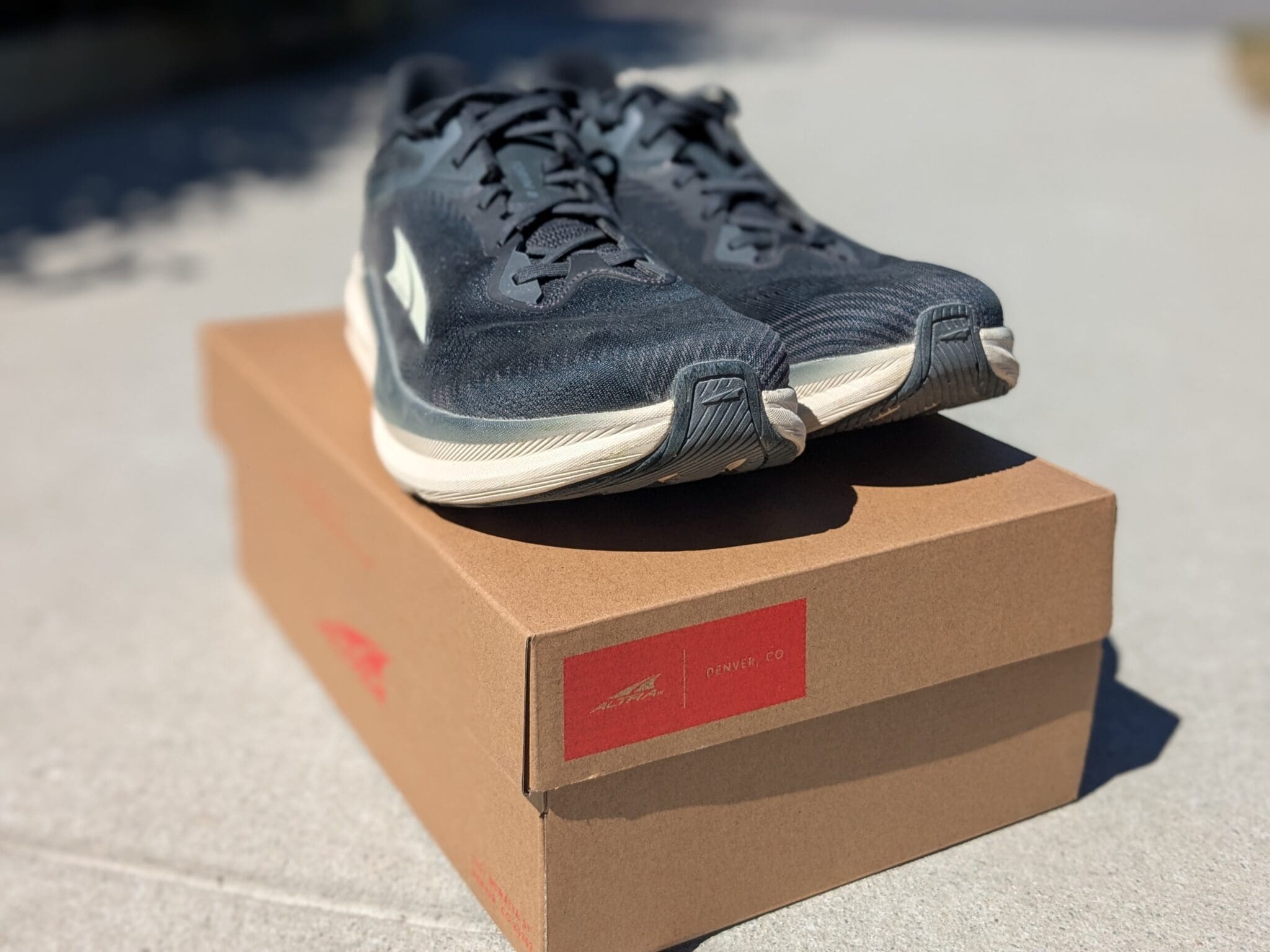
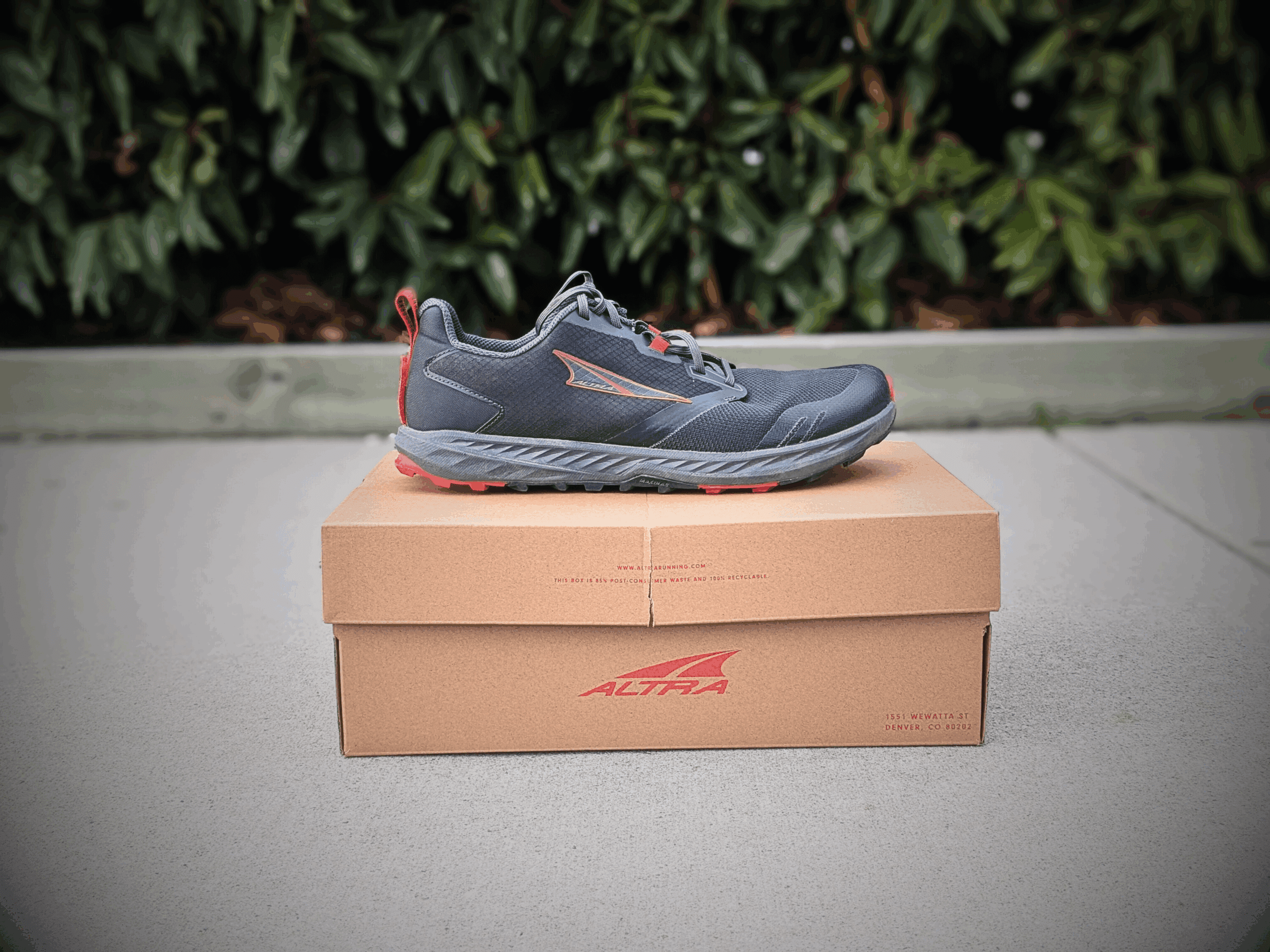
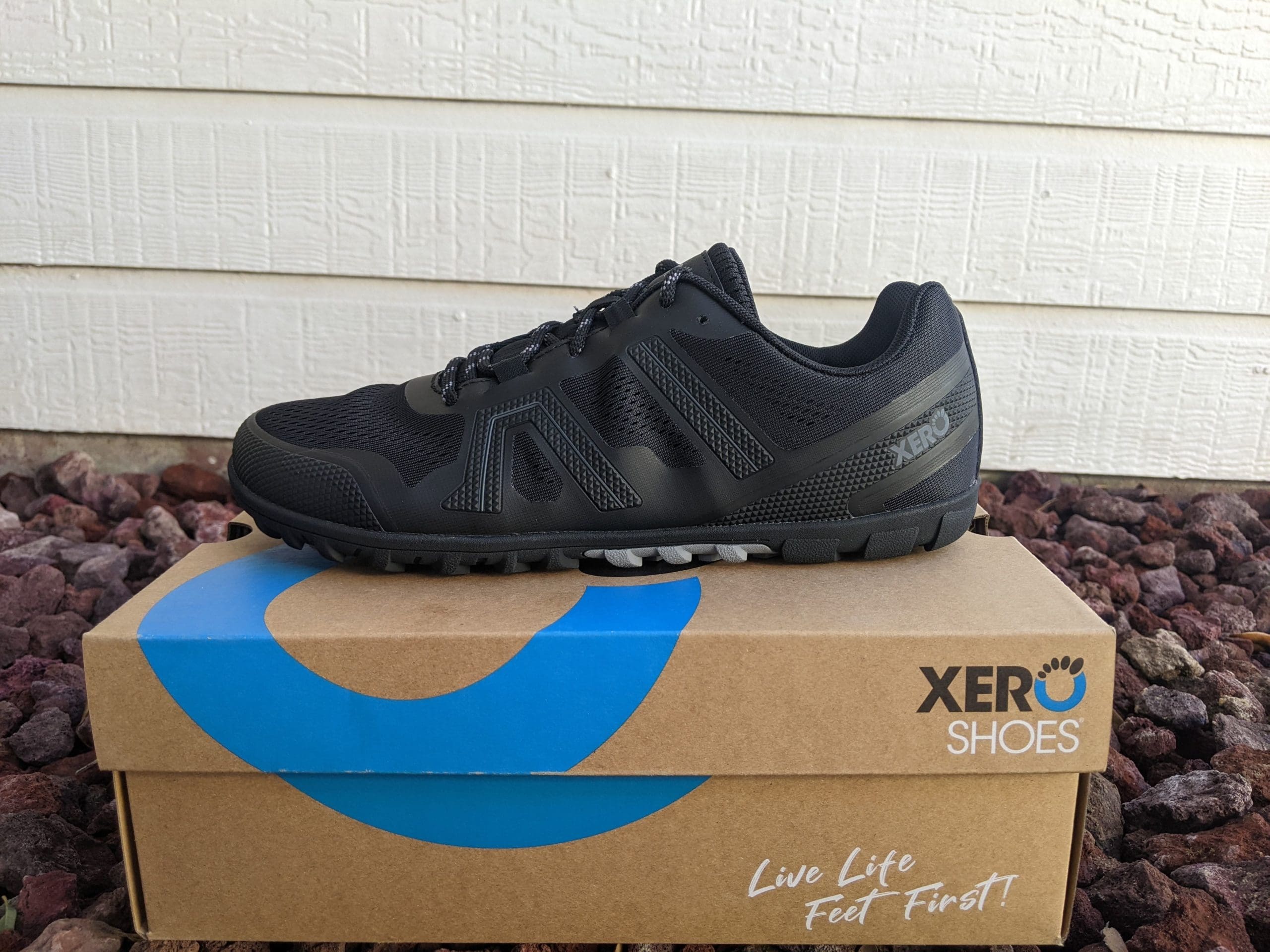
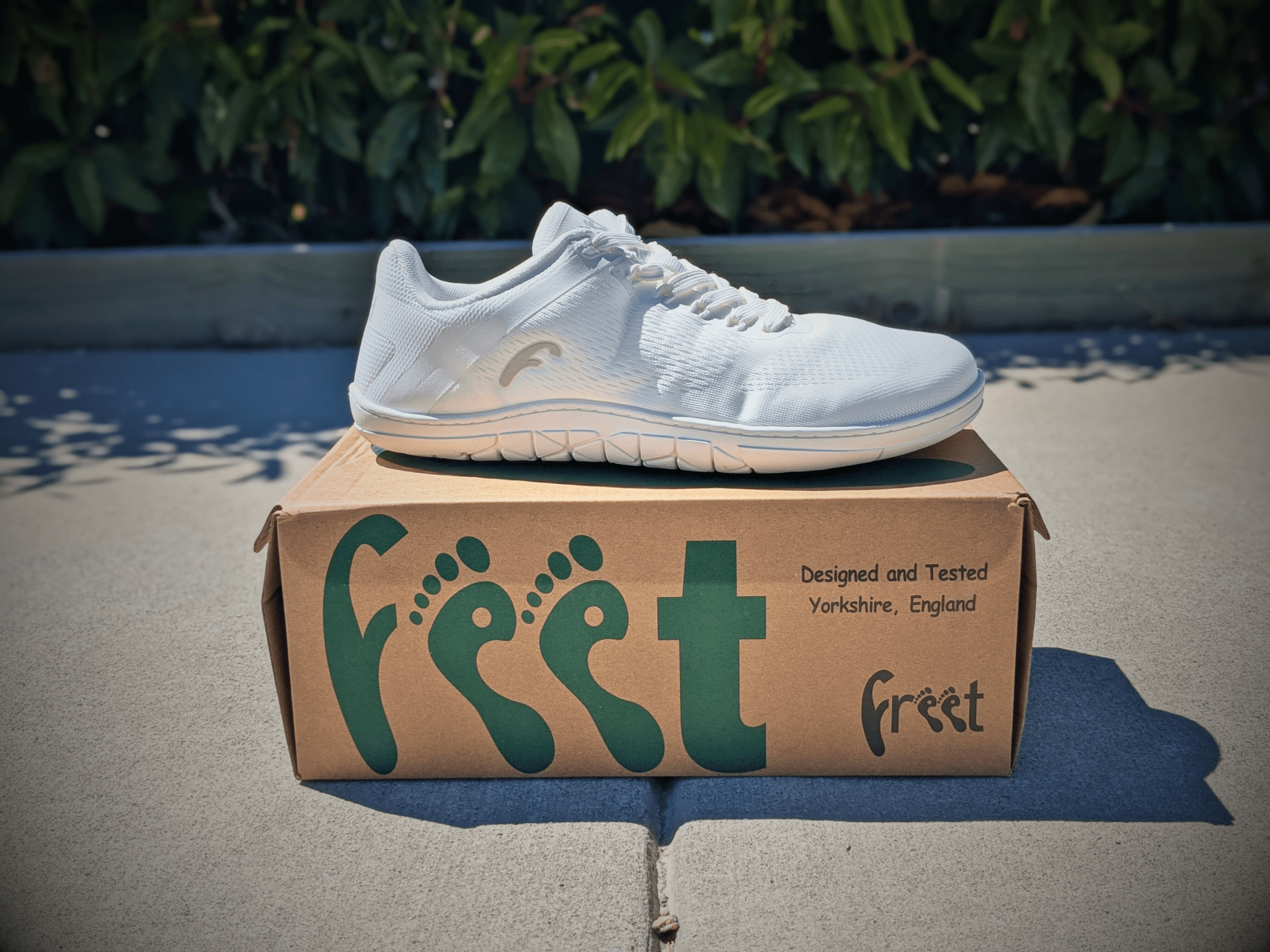
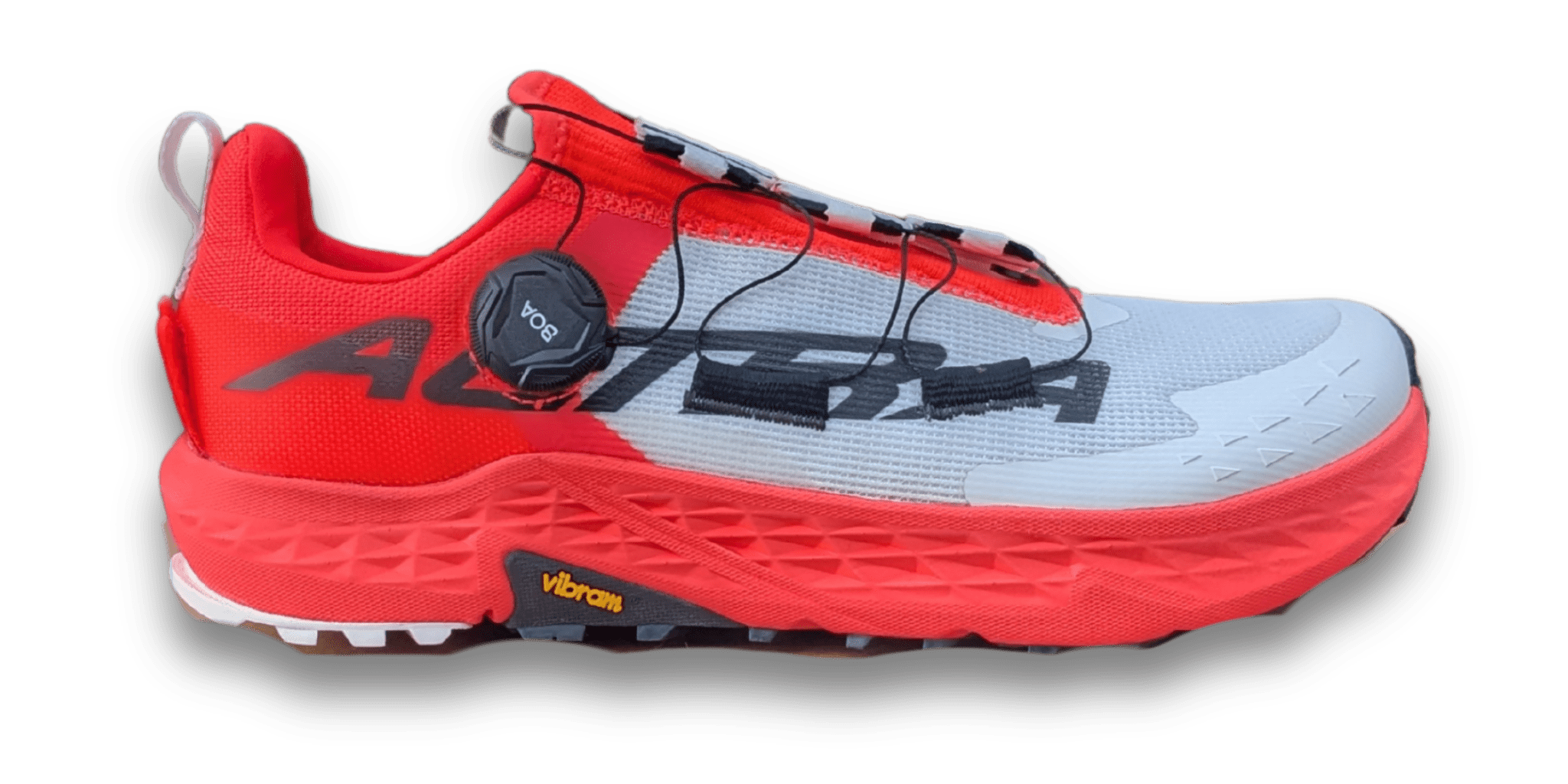
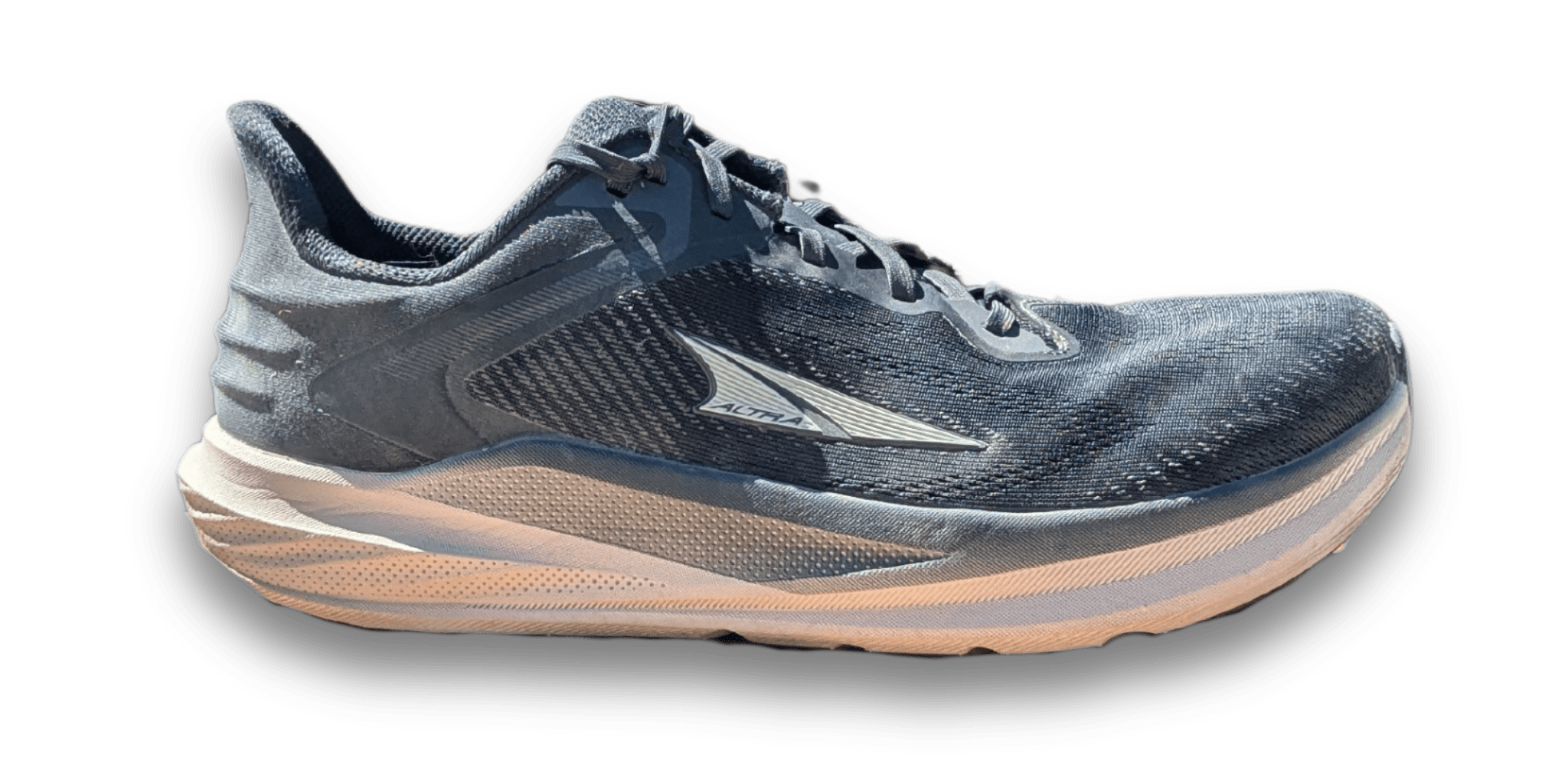
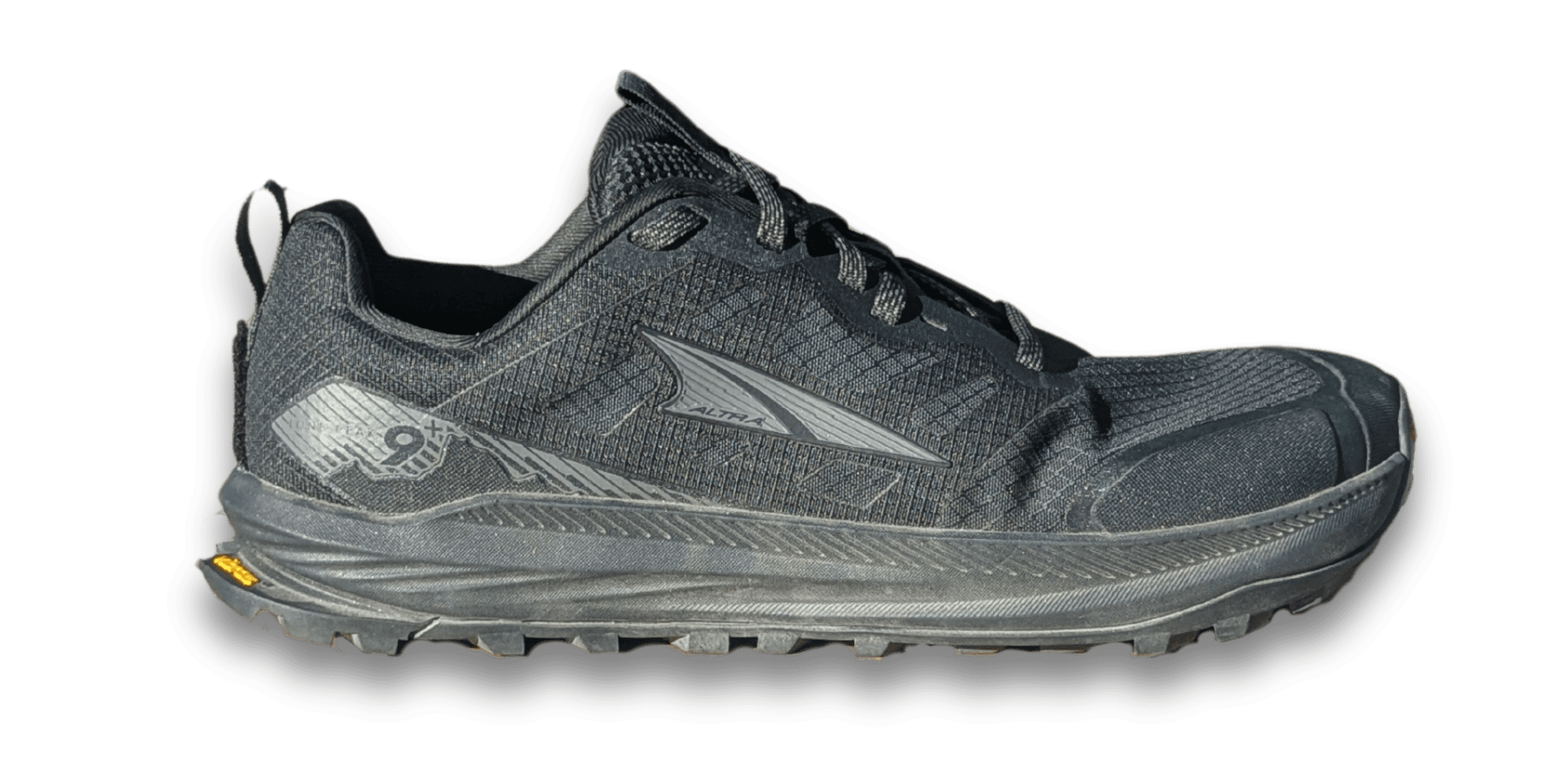
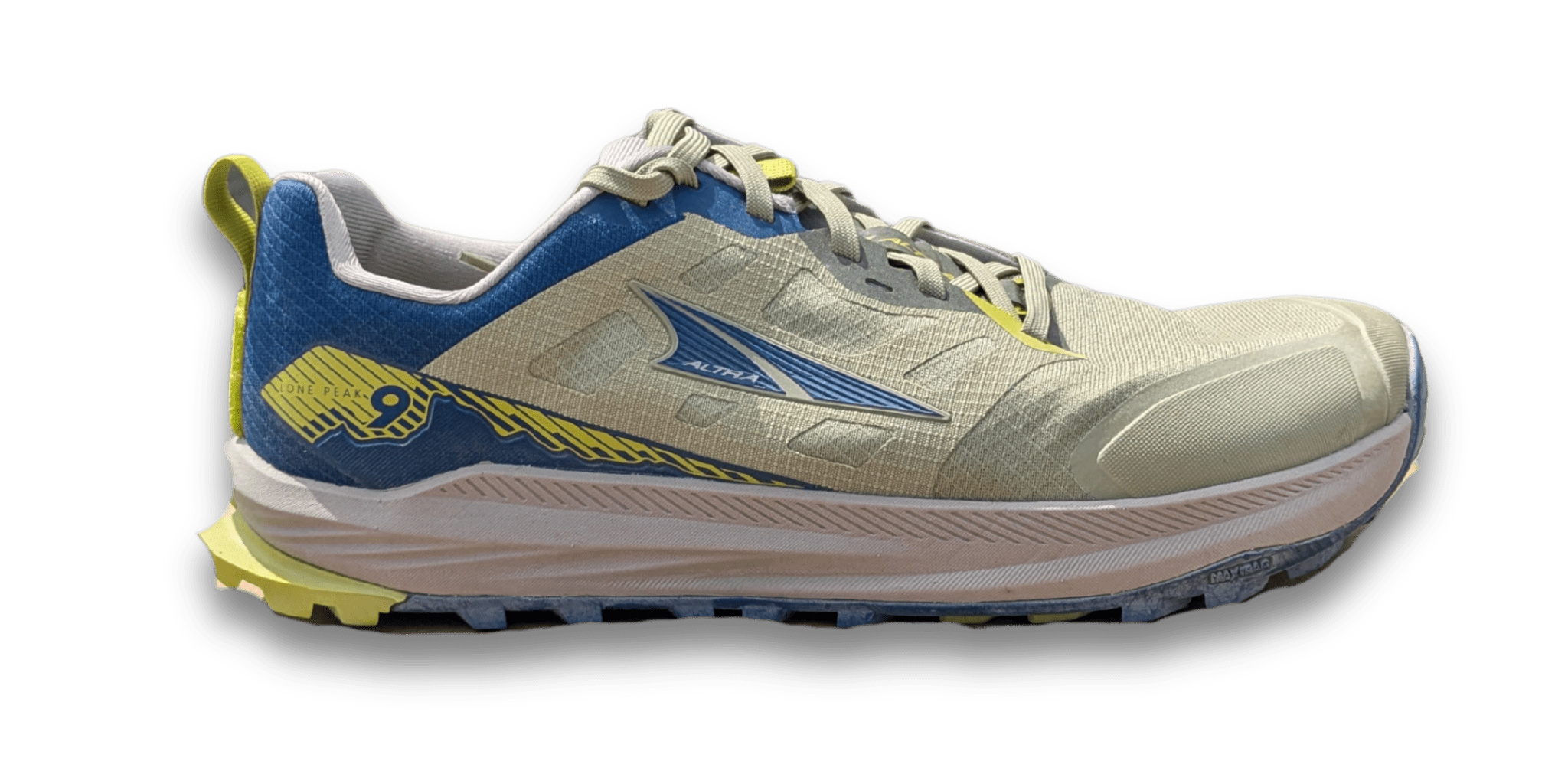

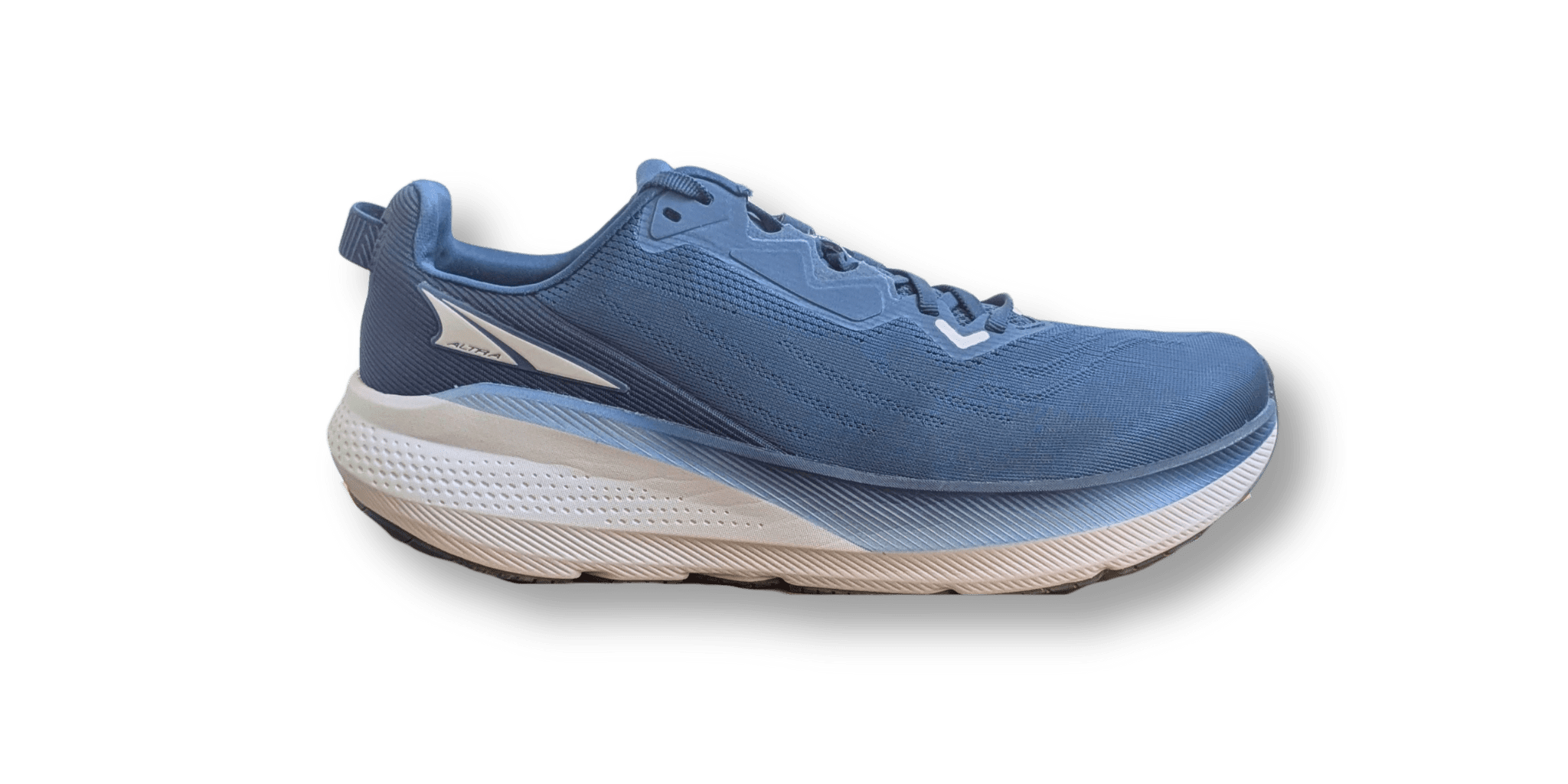
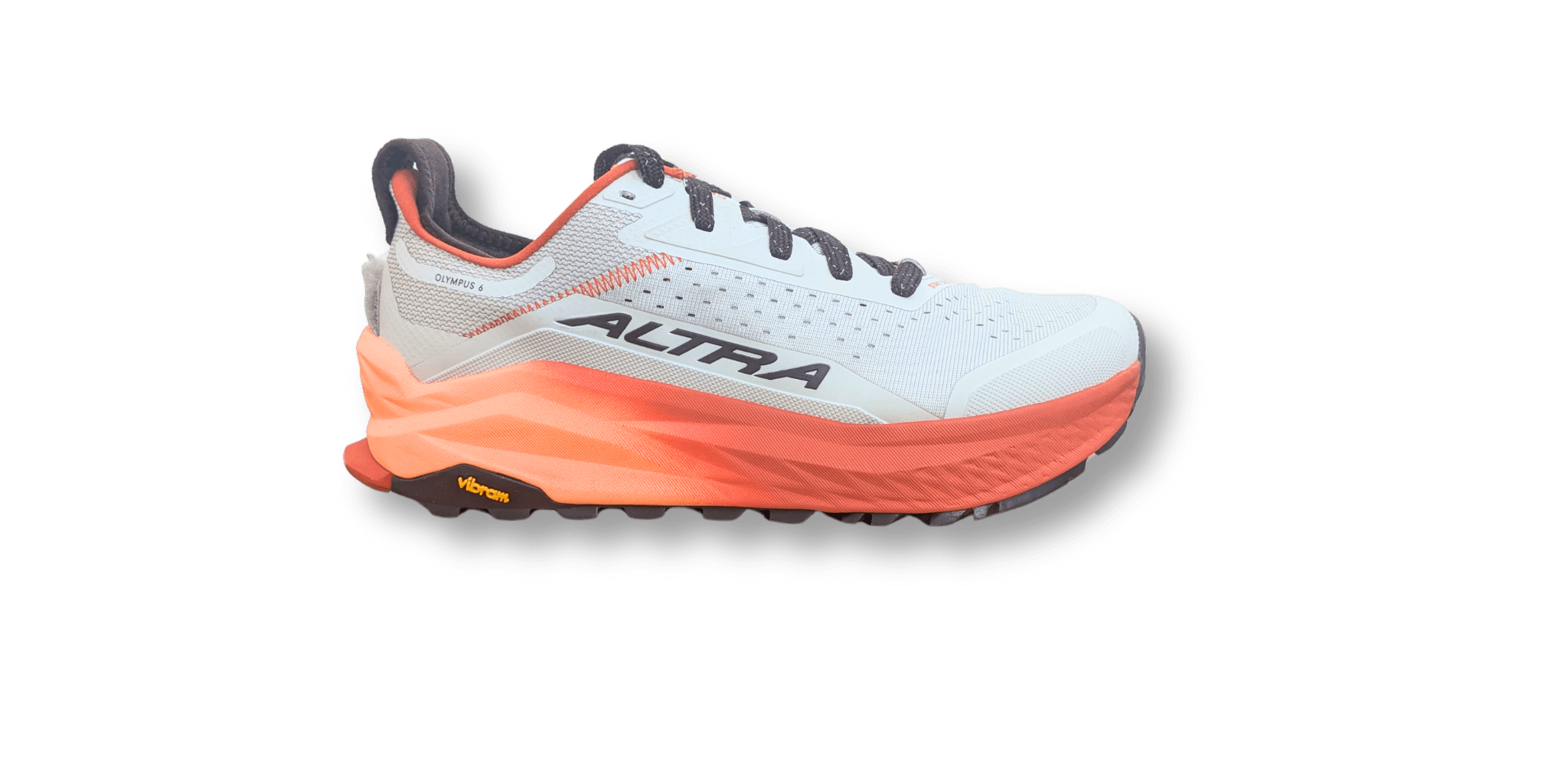
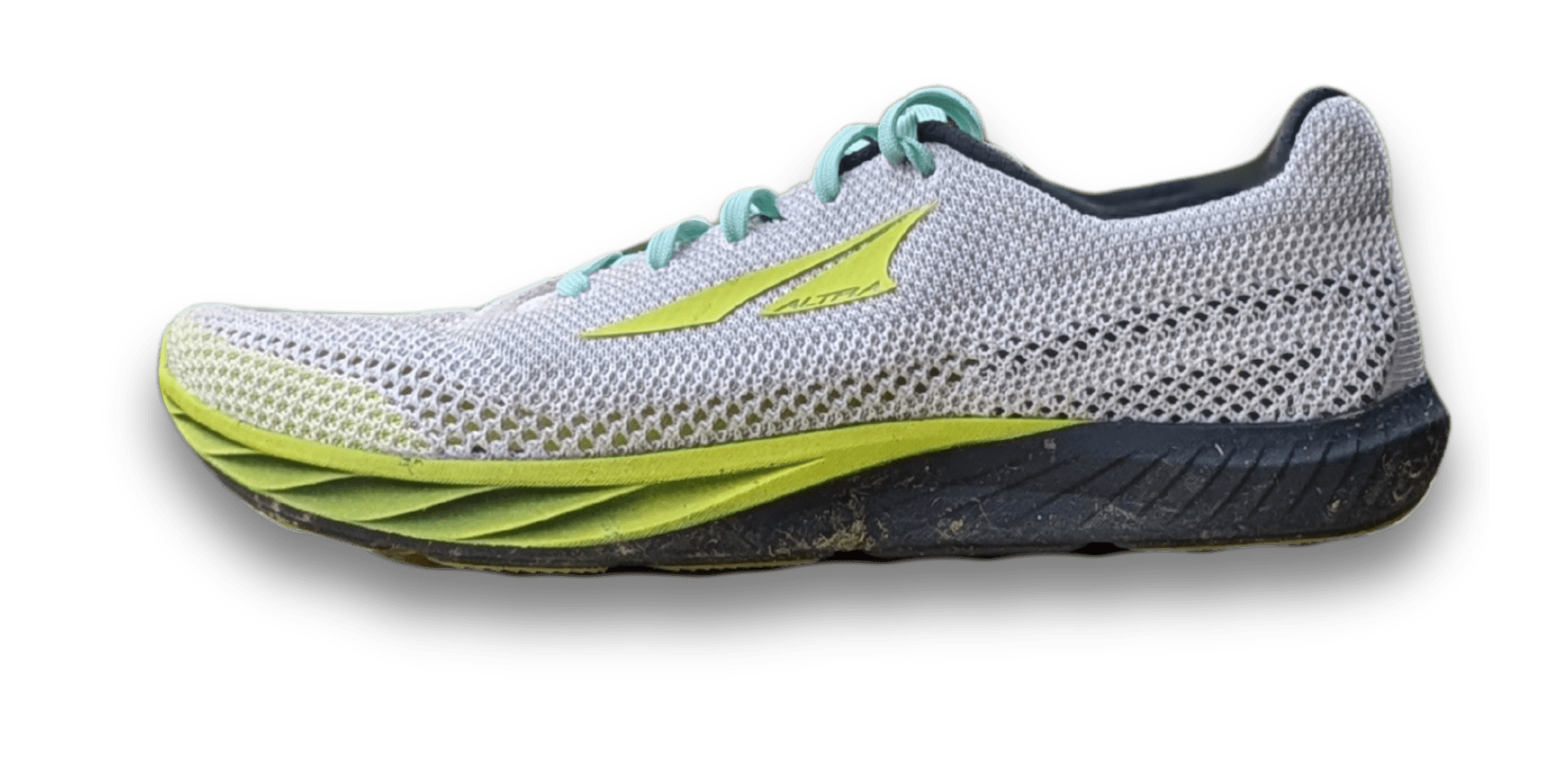
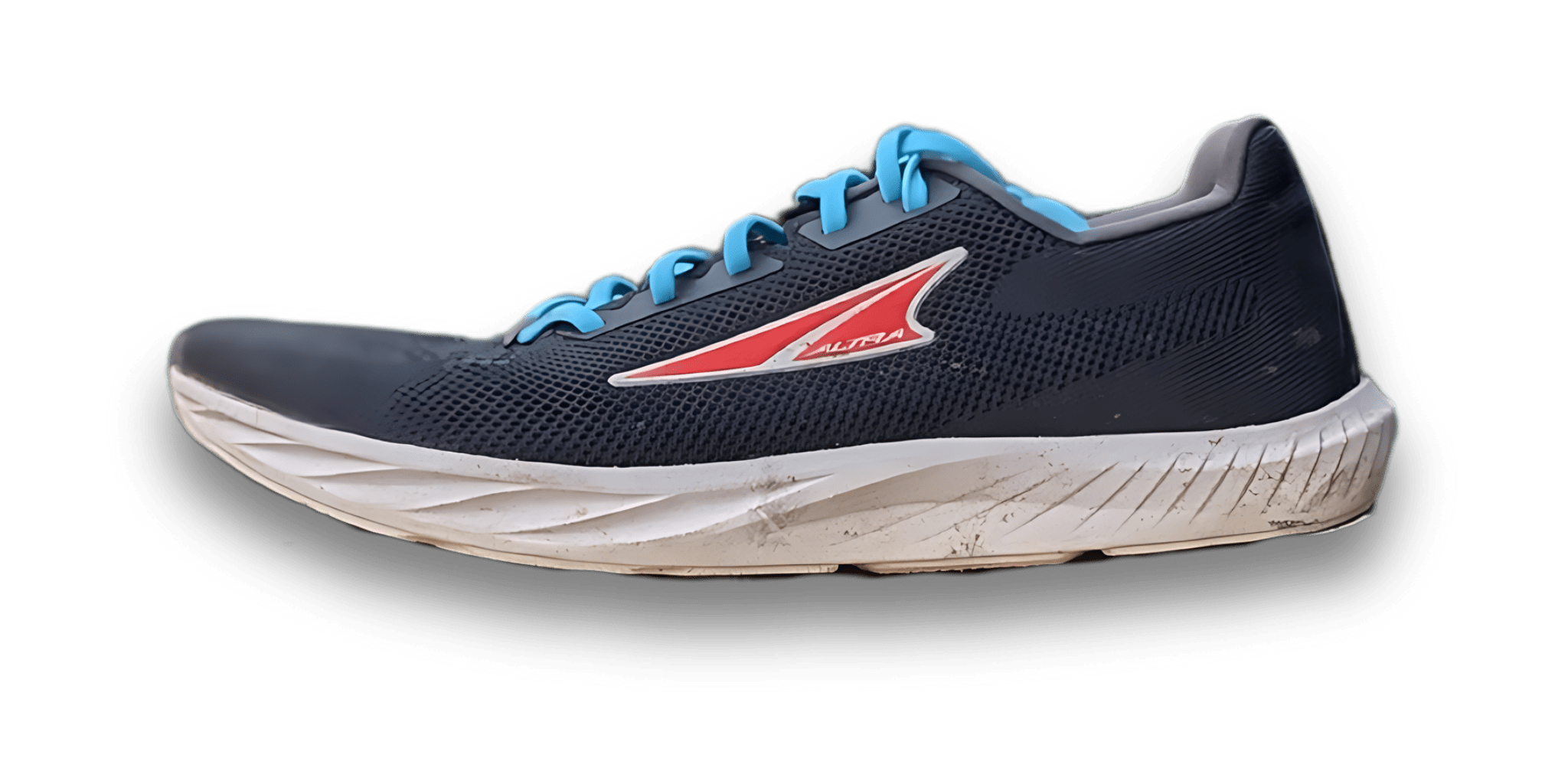
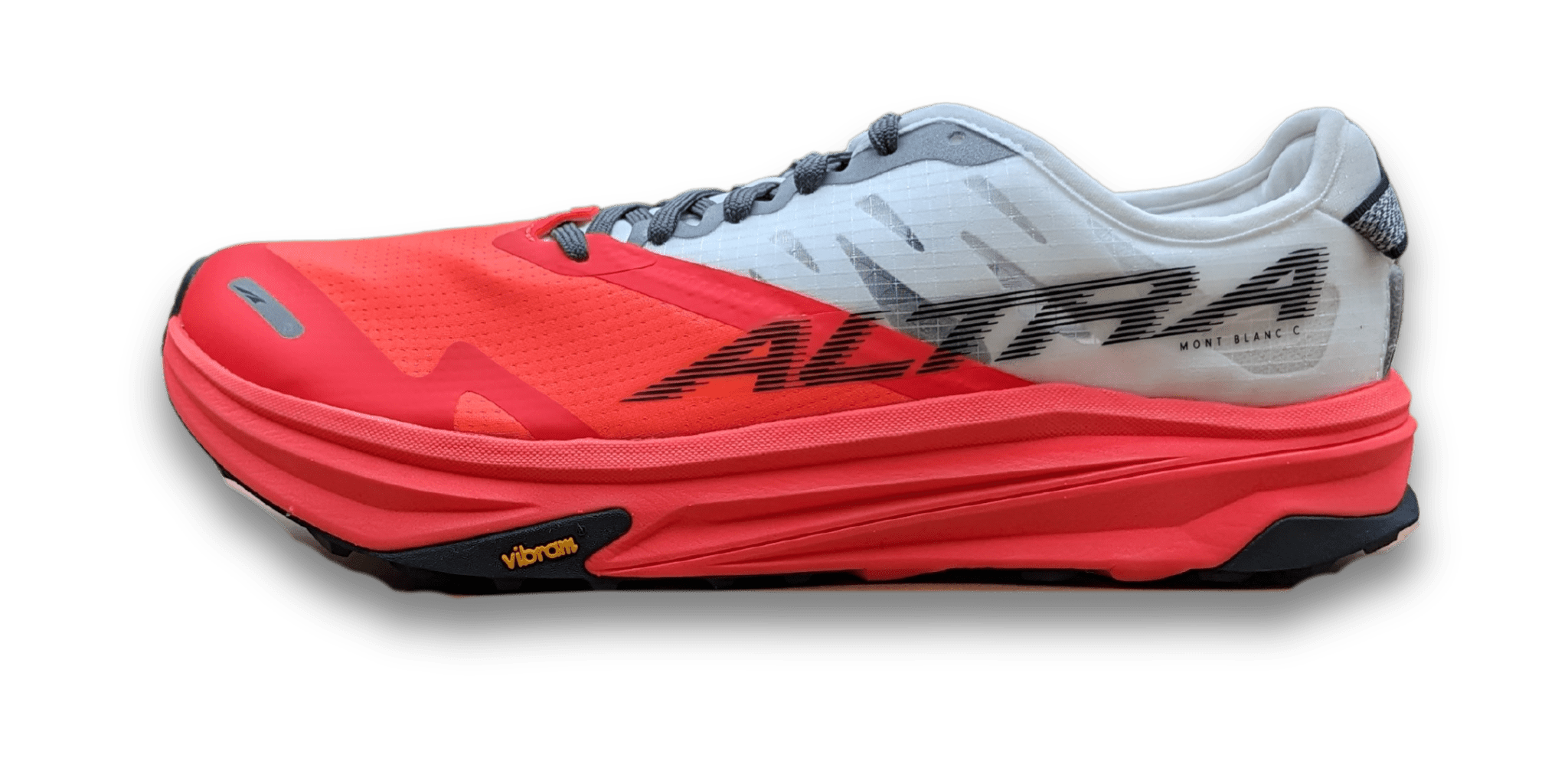

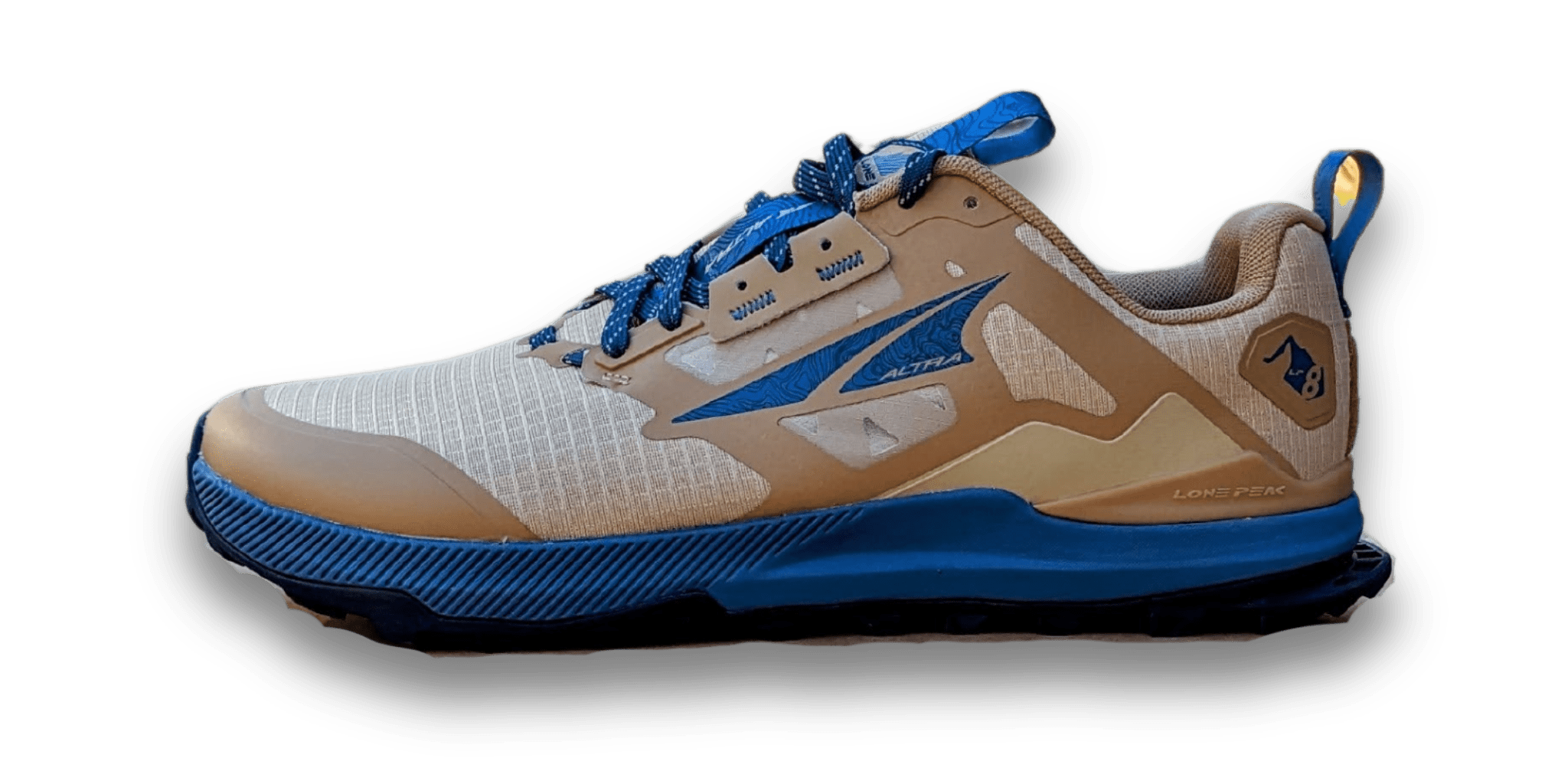
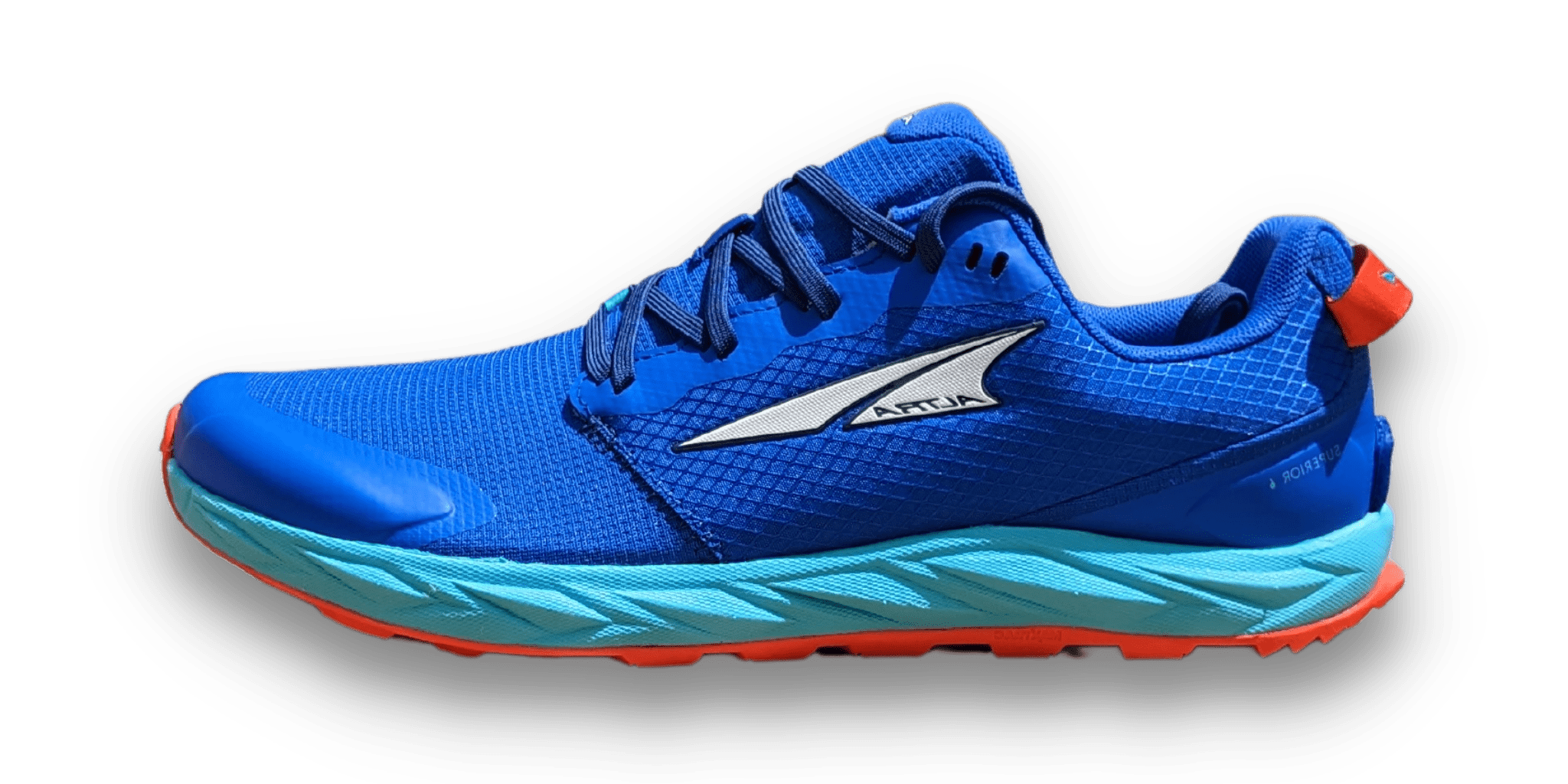
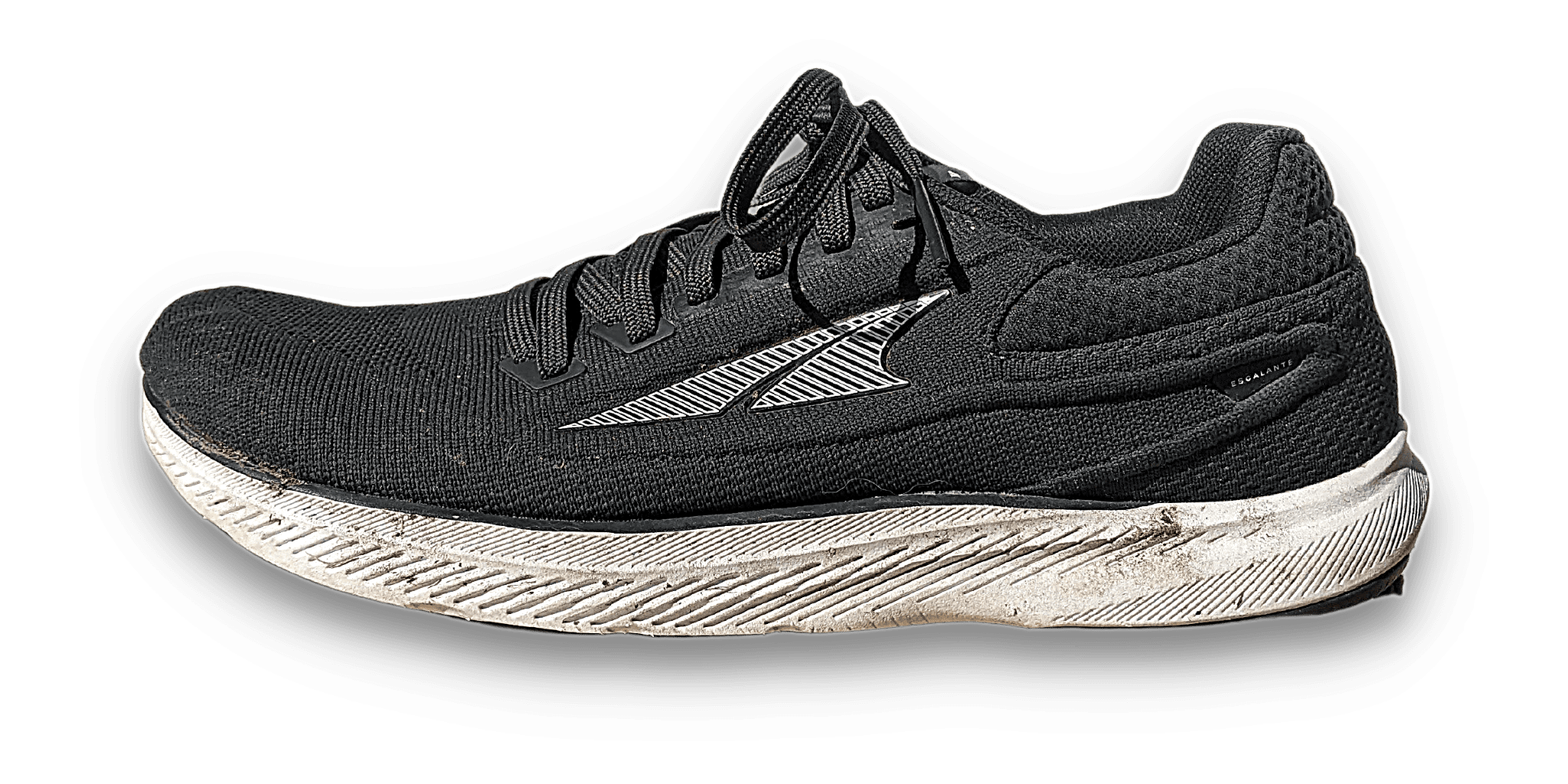
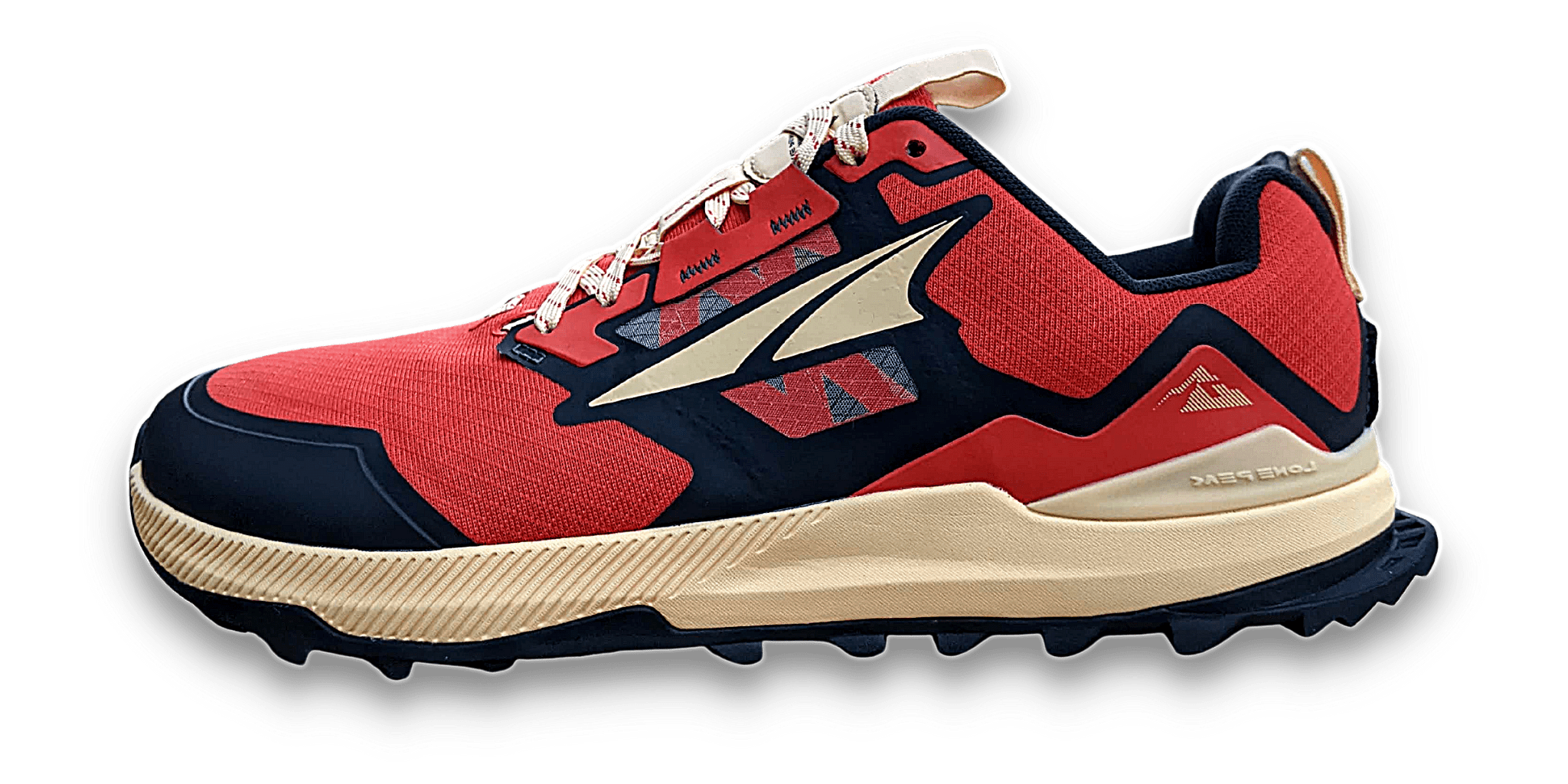
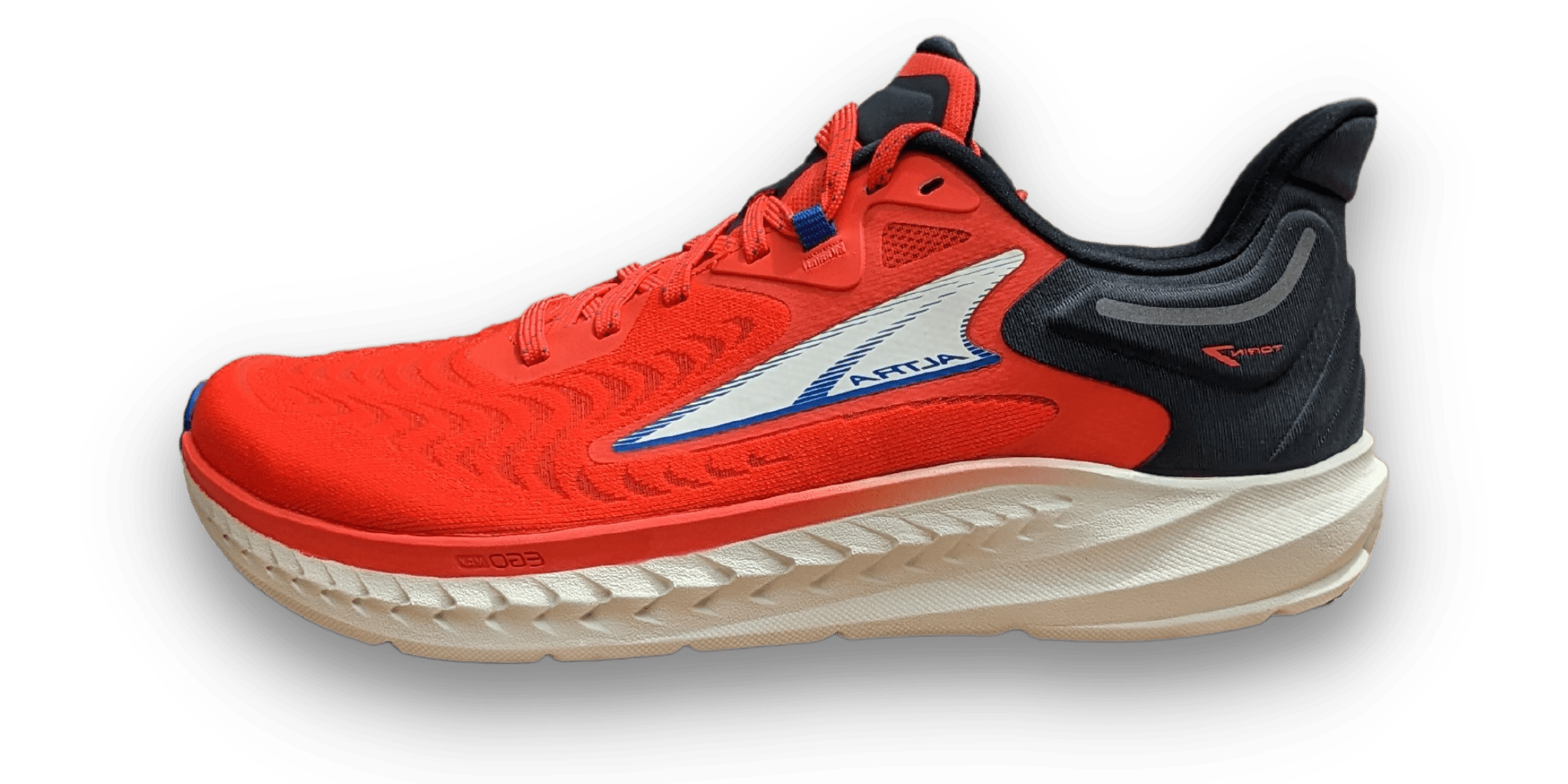
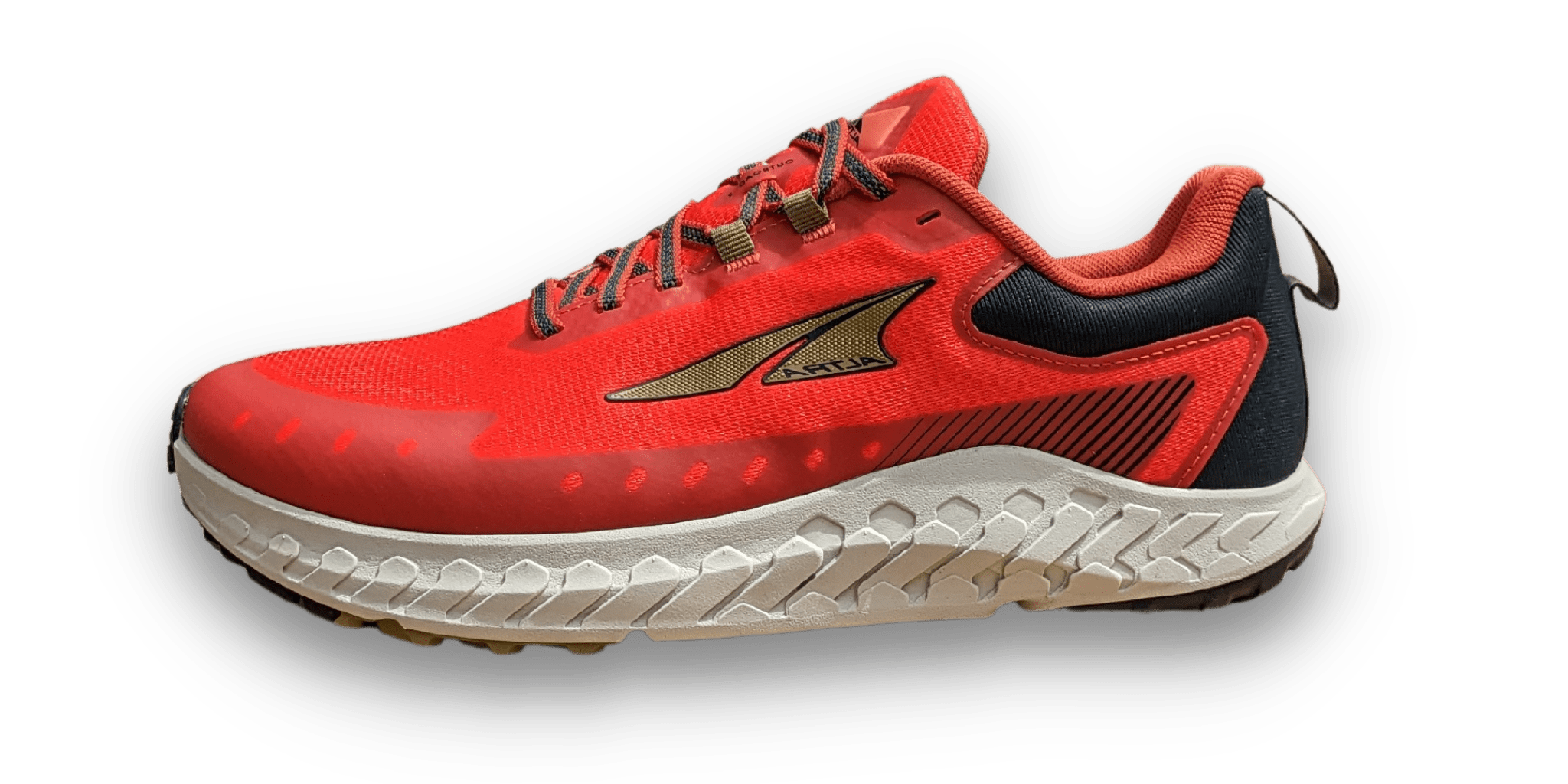
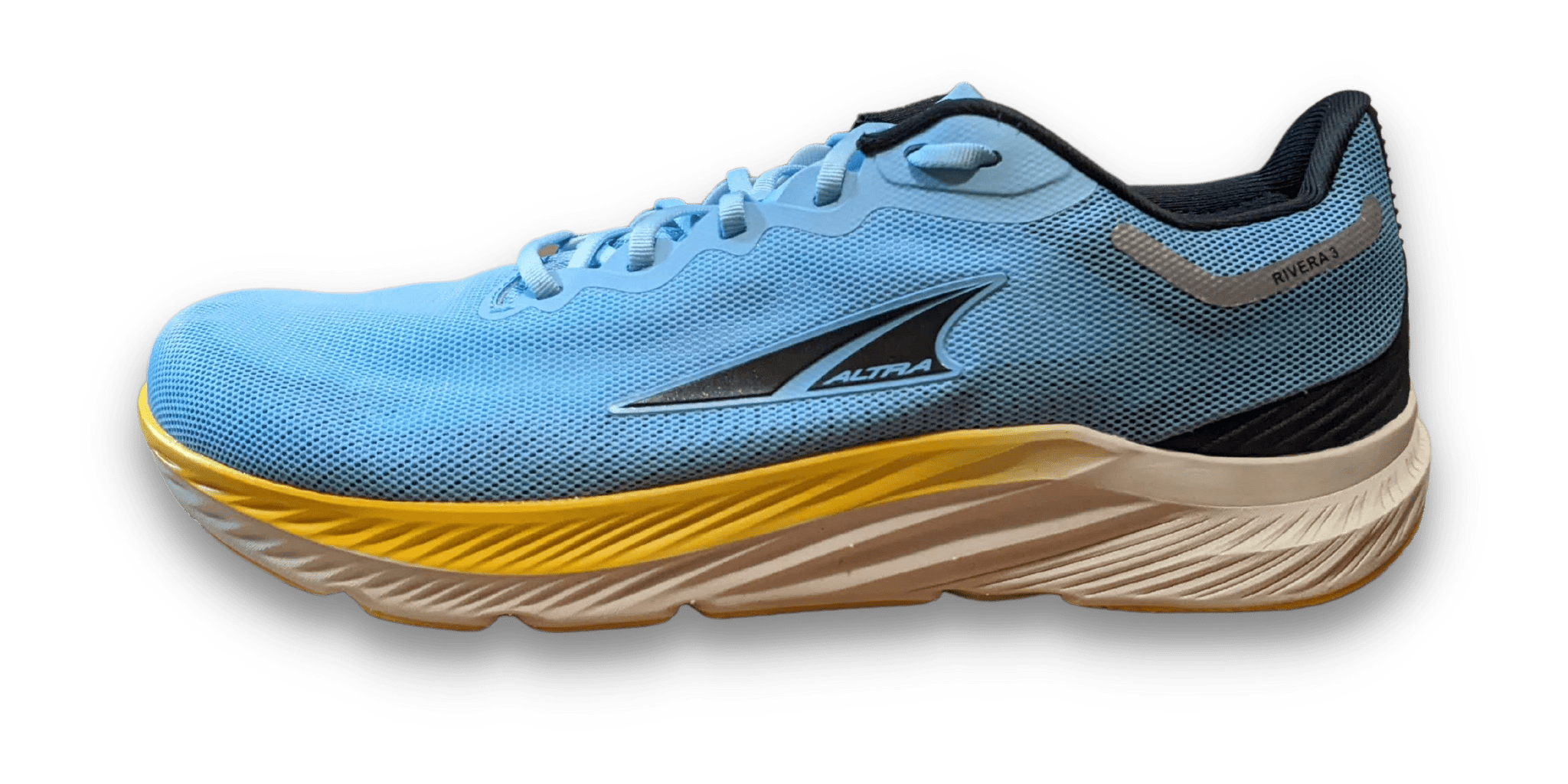
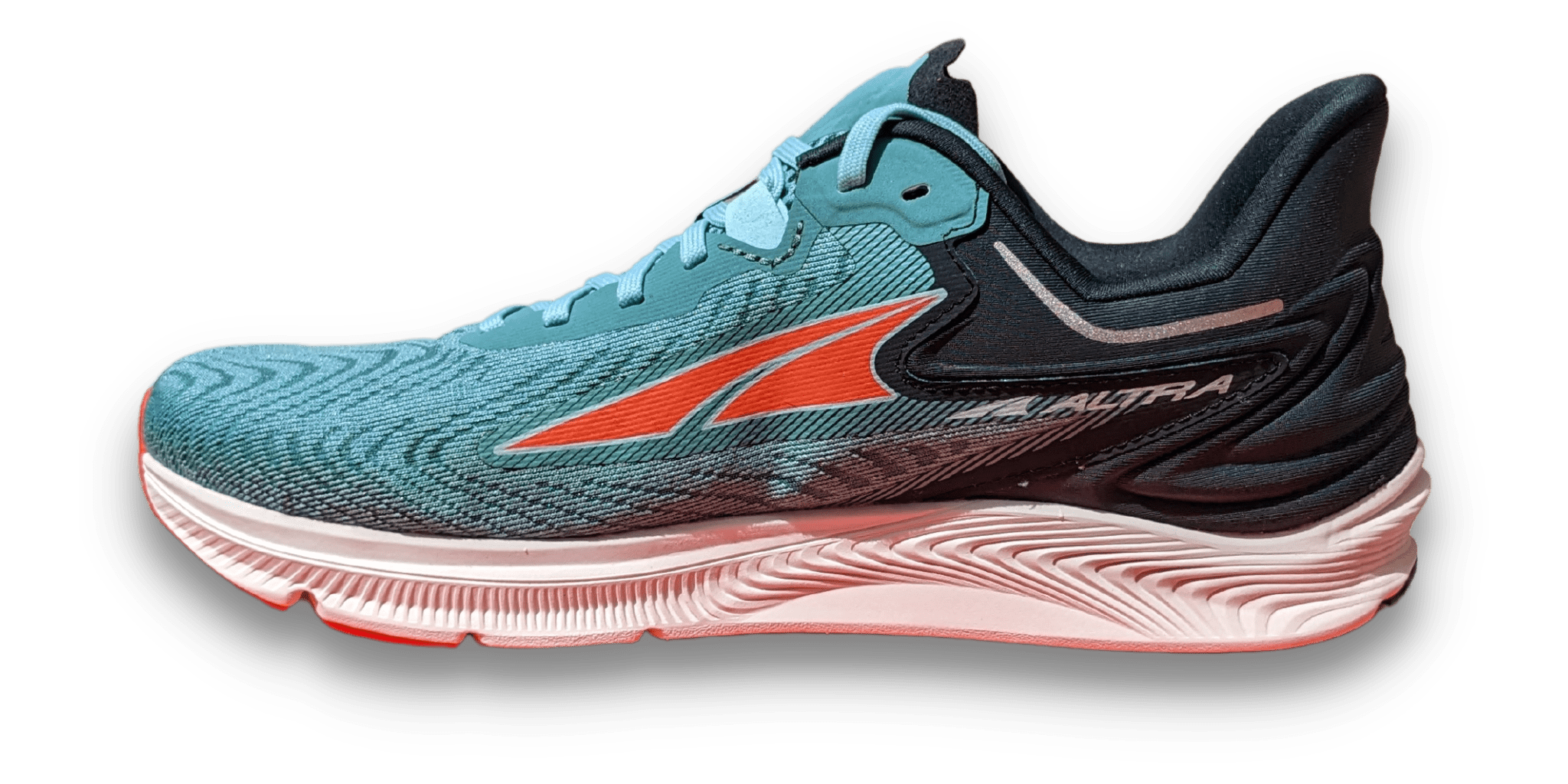
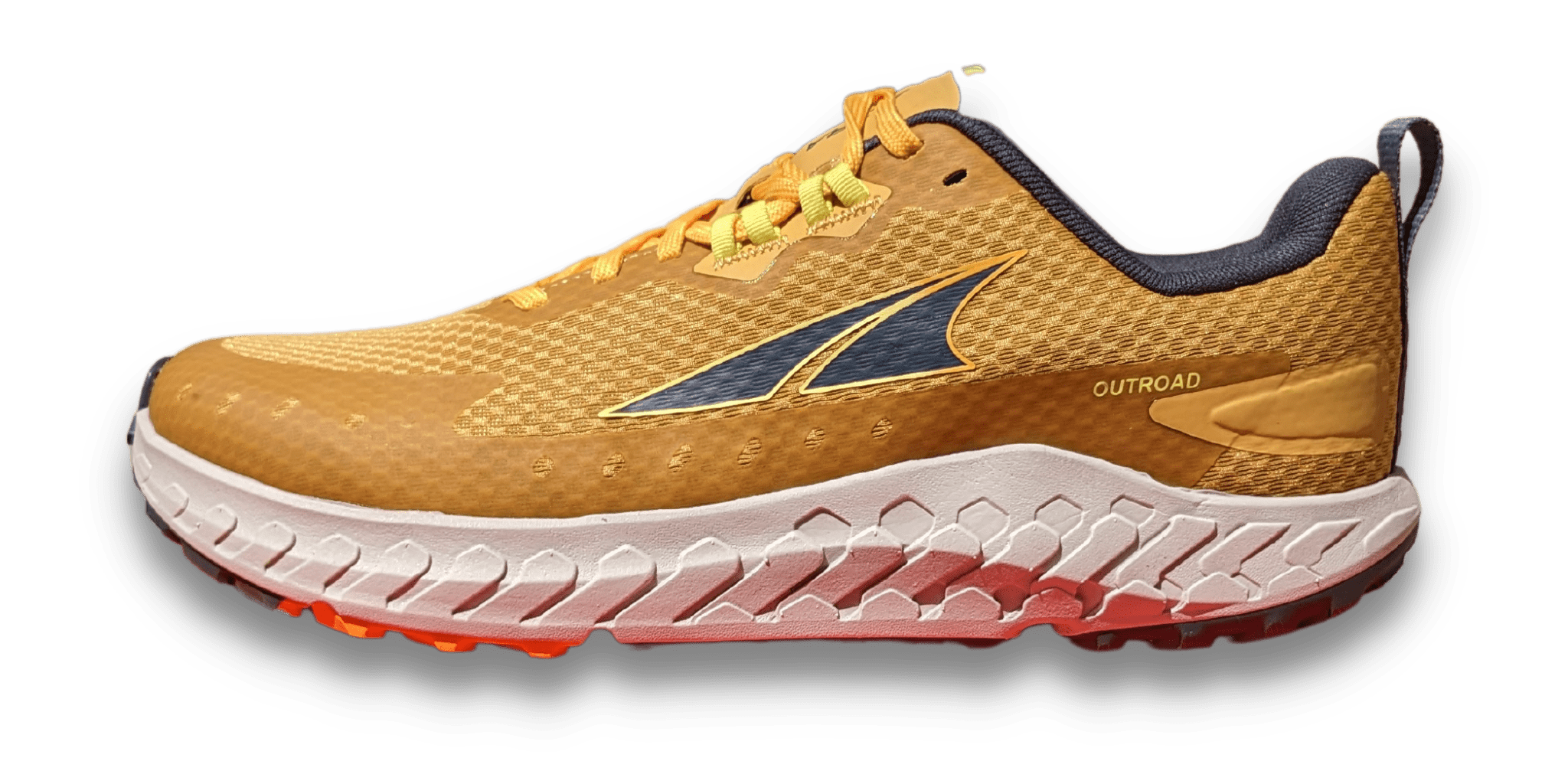
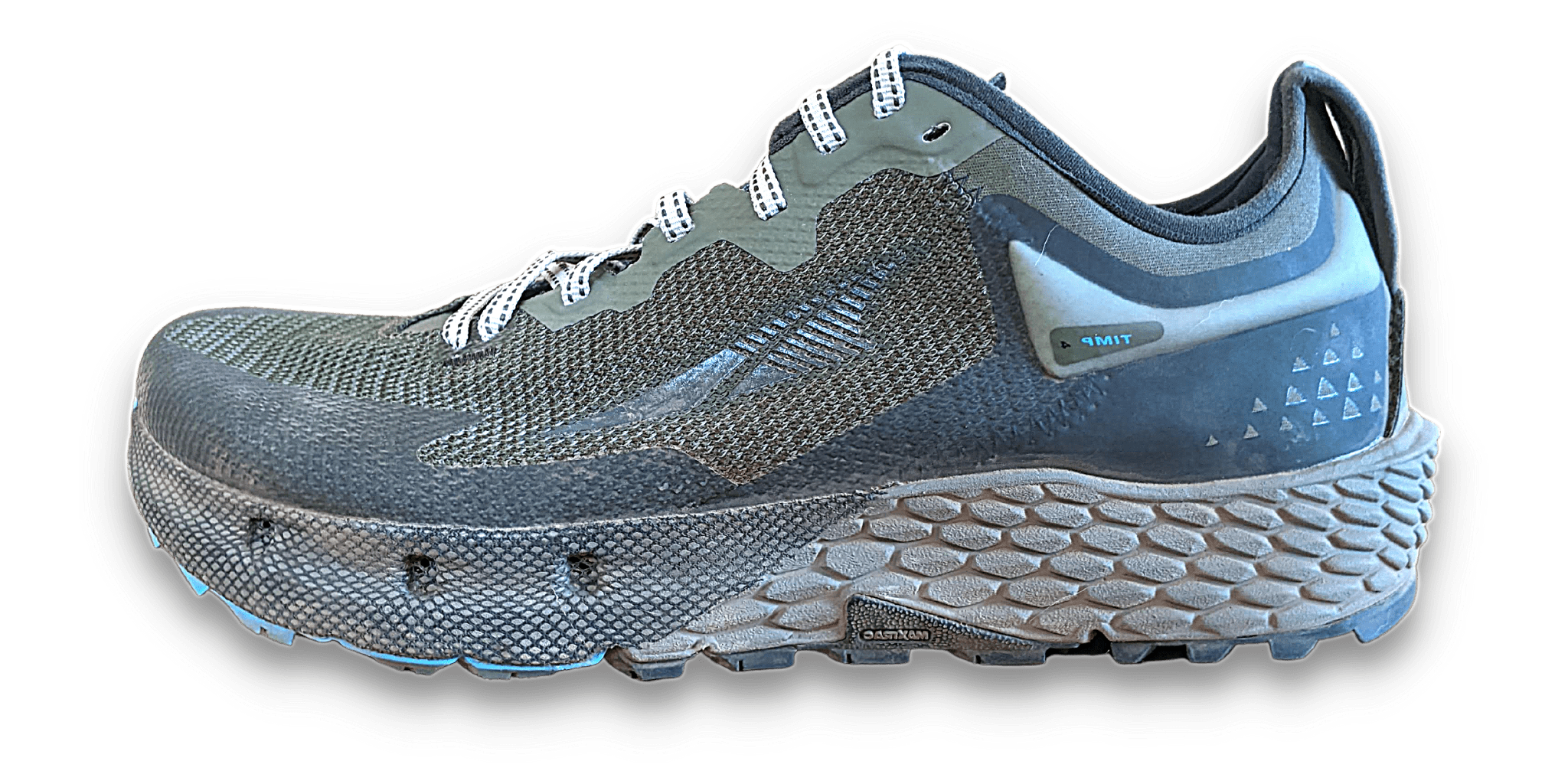

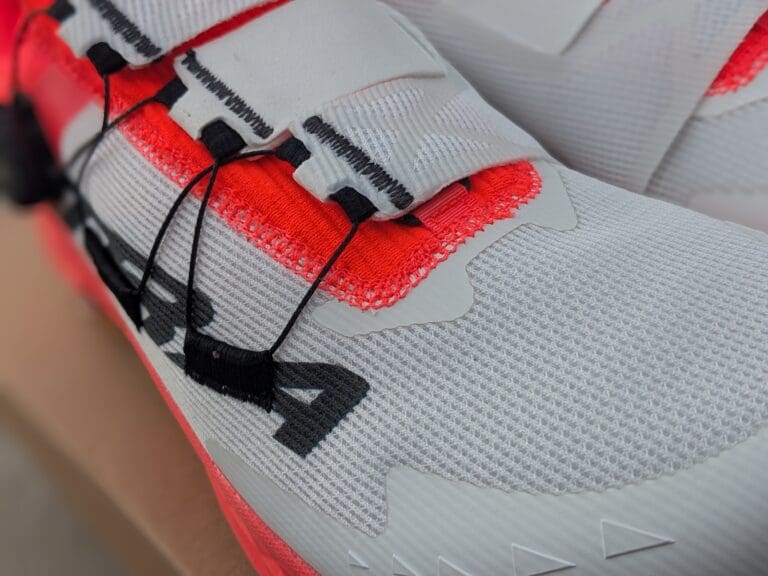
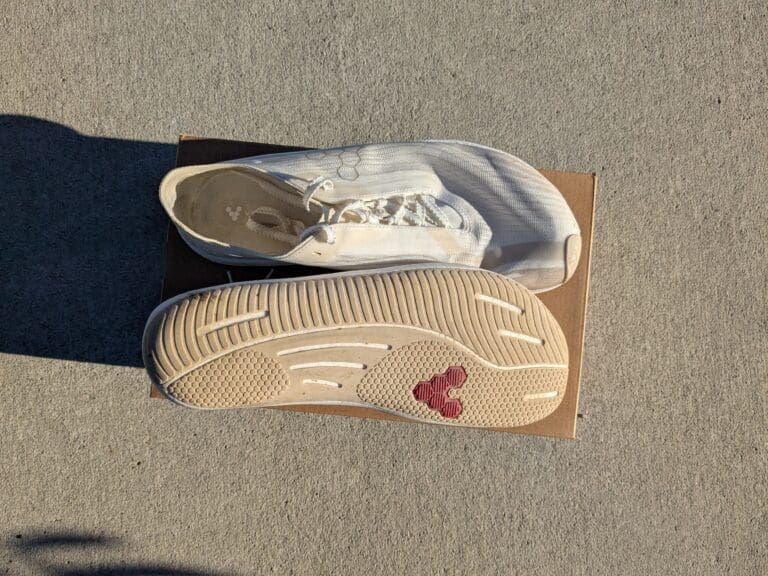
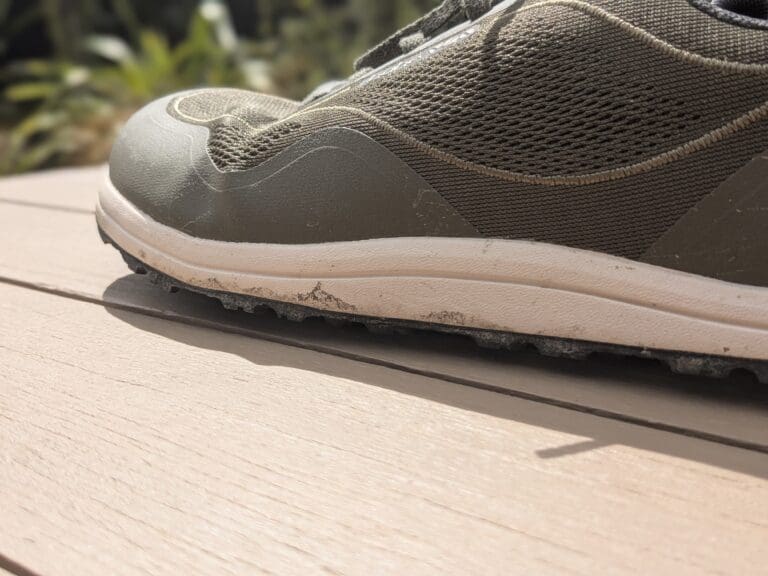
Hi Nick,
I am usually training in Mesa trails or Lone Peak 8’s, But I think the Mesa trails have a bit too much ground feel for races in rougher terrain and I find my Lone Peaks a bit ‘sloppy’. Do you have a suggestion? I am looking for a bit more stability, but still low stack and flexible. (and I have fairly narrow feet with a high instep).
Btw I’d like to buy my shoes through your affiliate links, but that doesn’t seem to work outside the us? (and also not for xero shoes)?
I totally understand your situation – the Mesa Trail’s aggressive ground feel can be punishing on rougher terrain, and those Lone Peak 8s definitely had that “sloppy” fit. That’s one reason I can’t wear them!
For your narrow feet with higher volume, I’d recommend checking out the Xero Scrambler Low EV – it’s got more protective than the Mesa Trail with 10mm stack height, but much tougher. The upper is a little more structured than the Mesa Trail but still has a similar fit. It should eliminate that “sloppy” feeling you’re experiencing with the Lone Peaks.
Regarding affiliate links – you’re absolutely right. And the only reason for that is because it requires extra work. :S Time which I don’t have, but I appreciate you trying to support. I believe the Xero Shoes affiliate link will still work for the EU though? https://xeroshoes.com/go/illnesstoultra
Thanks!